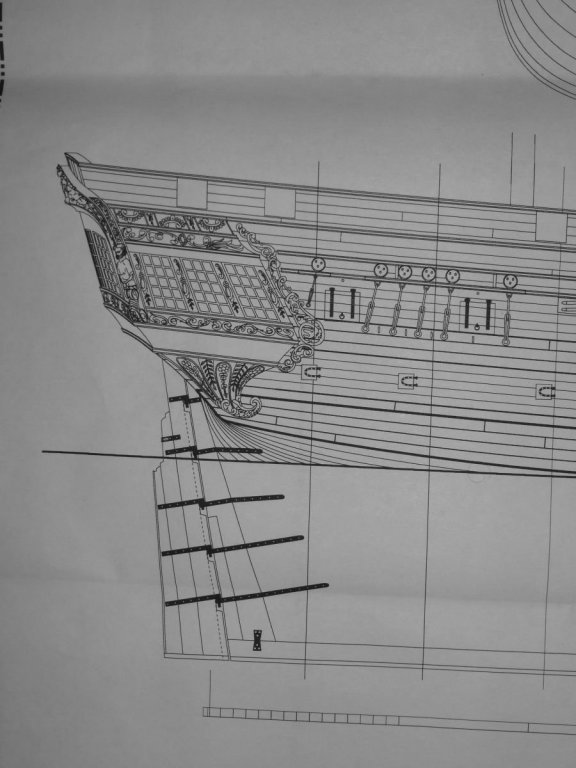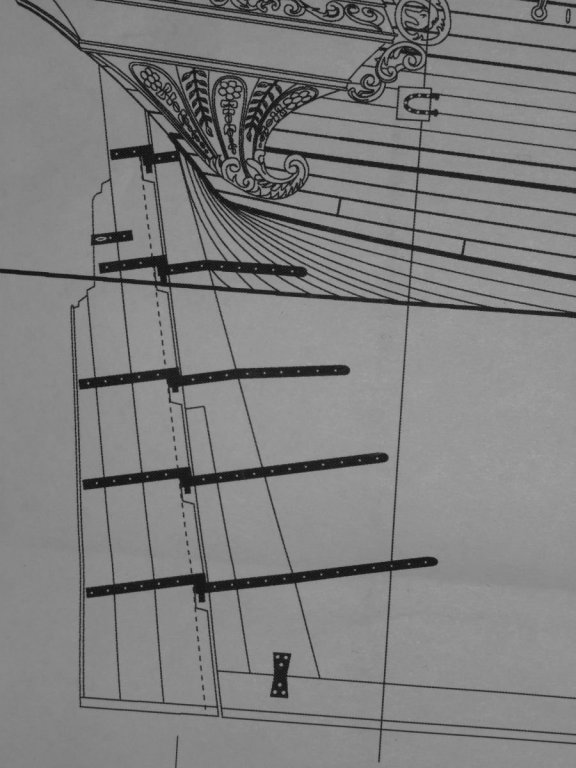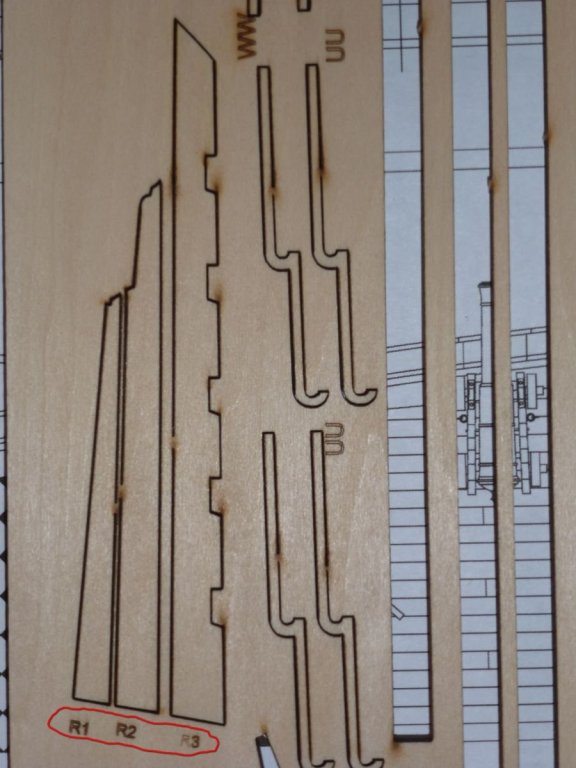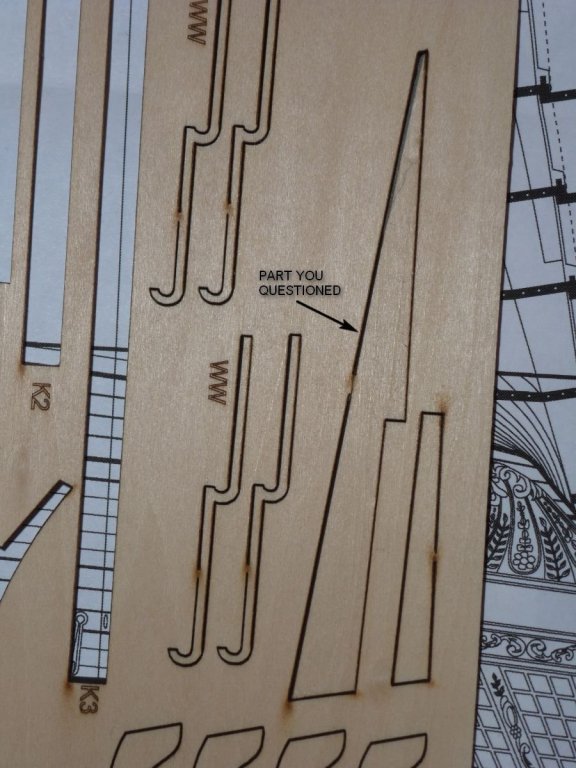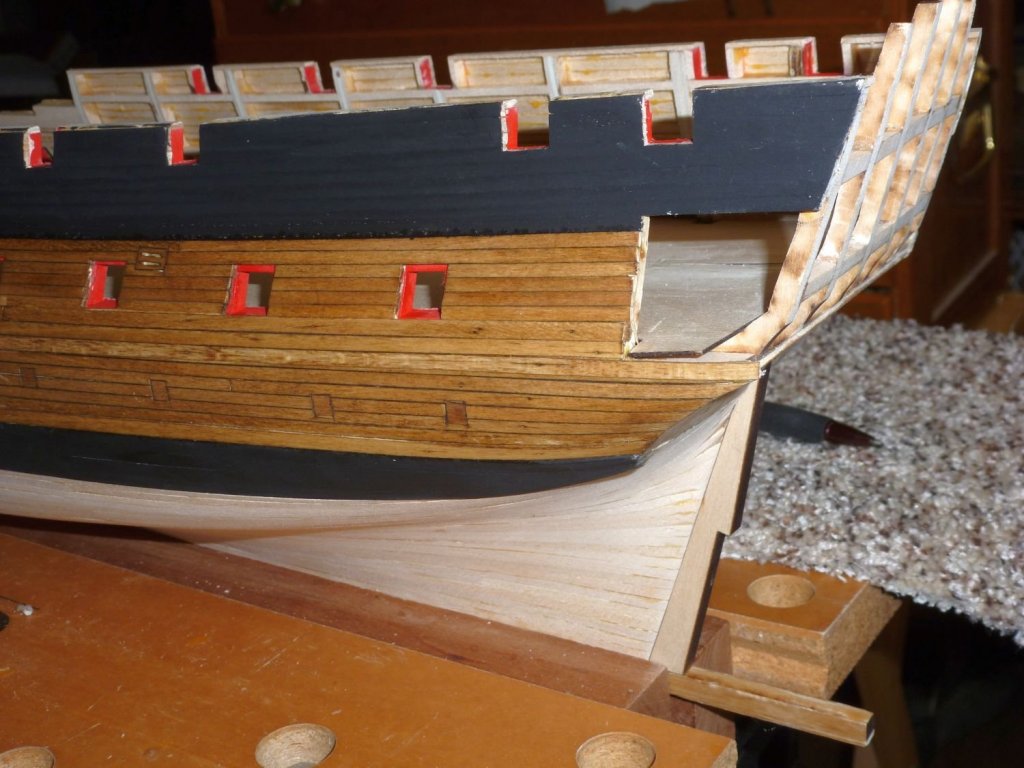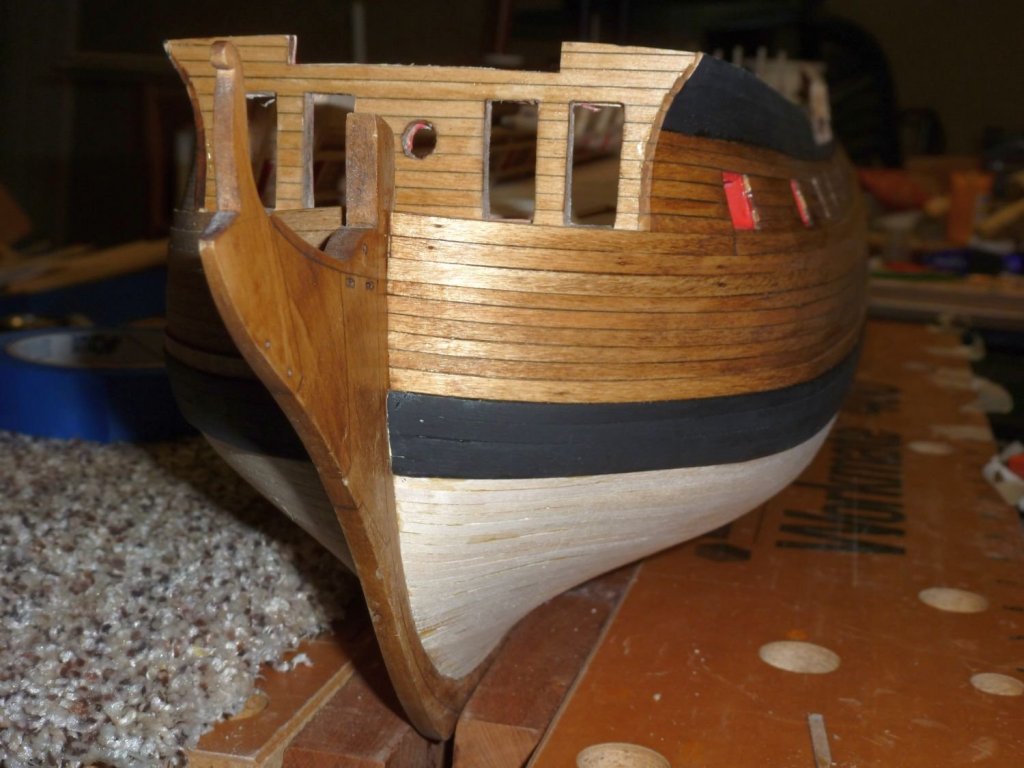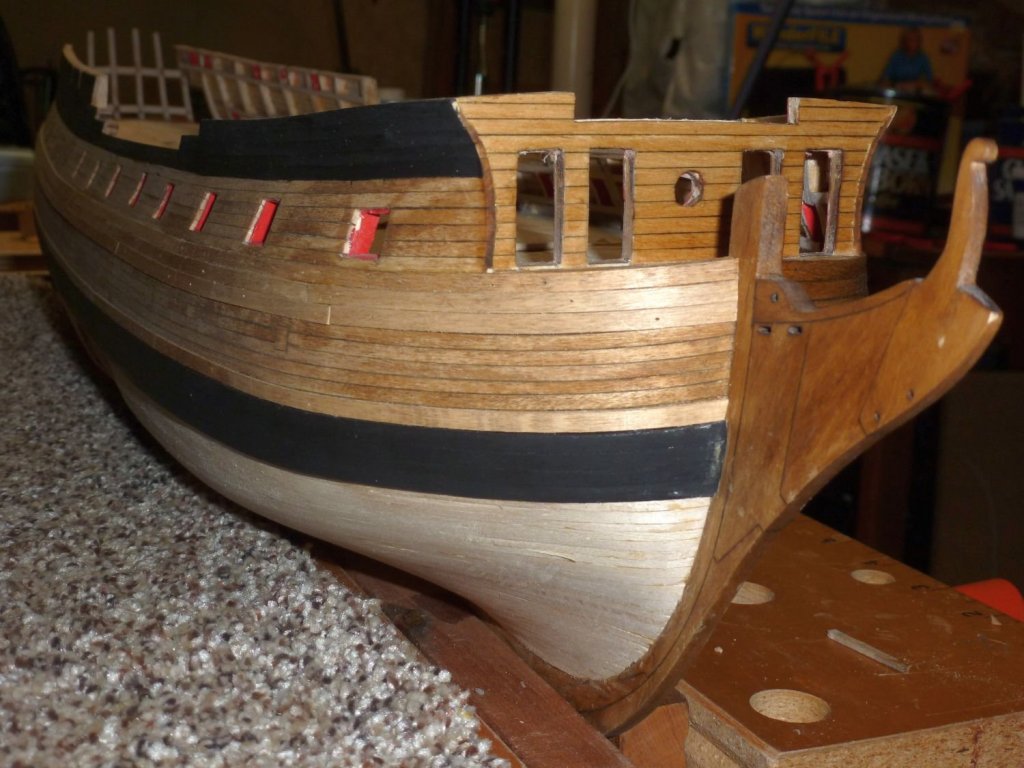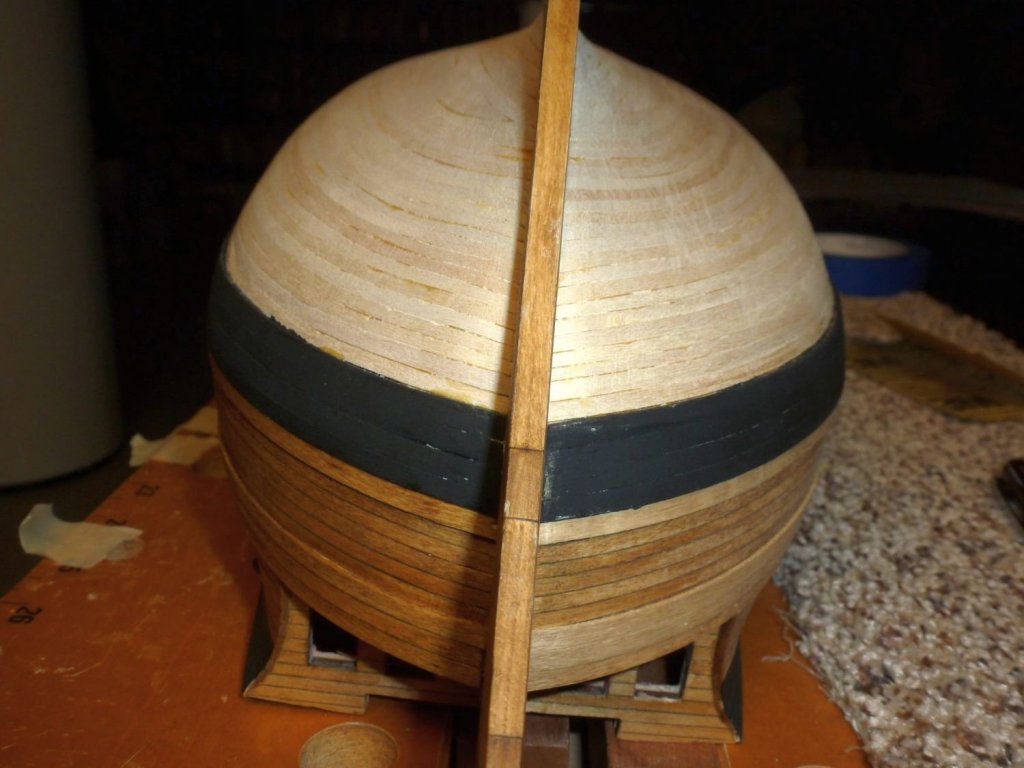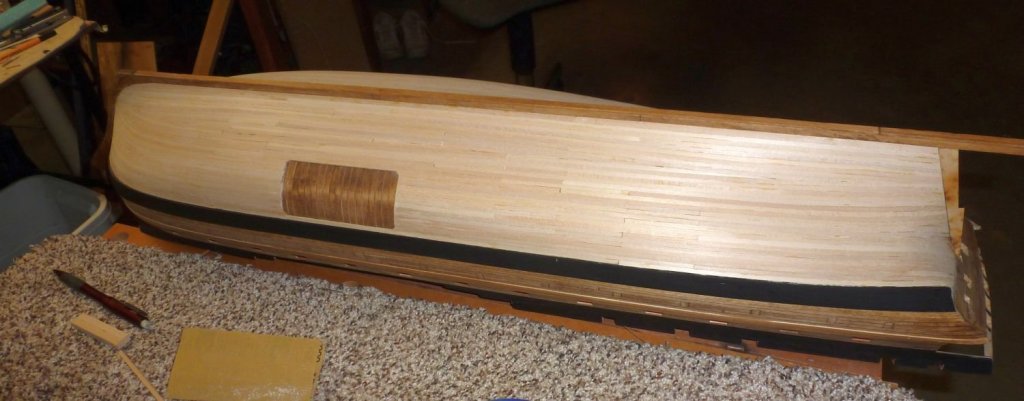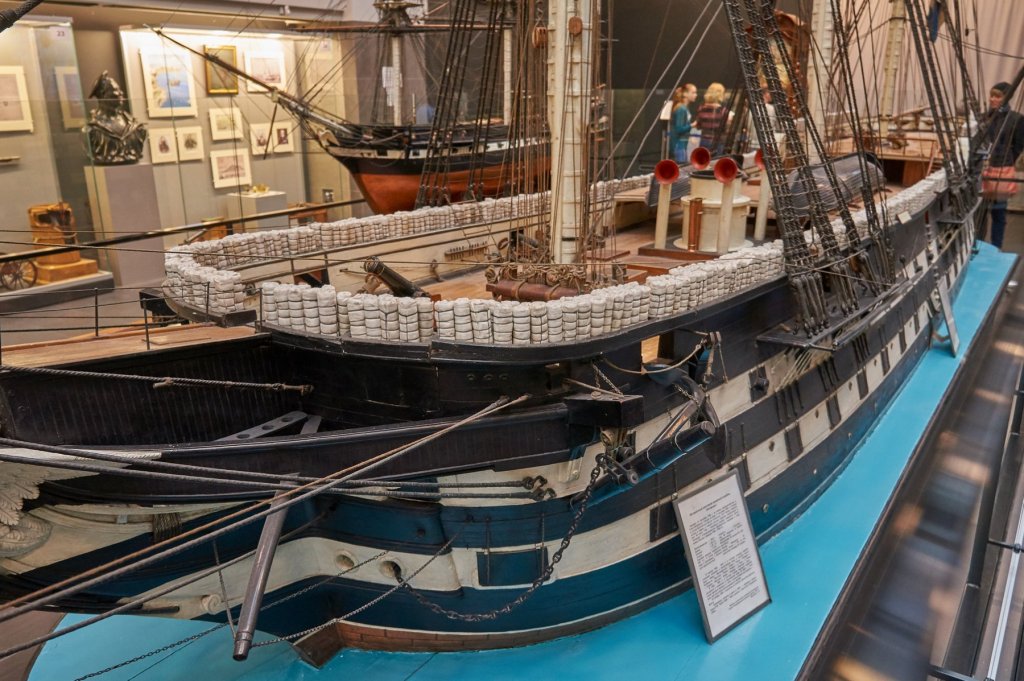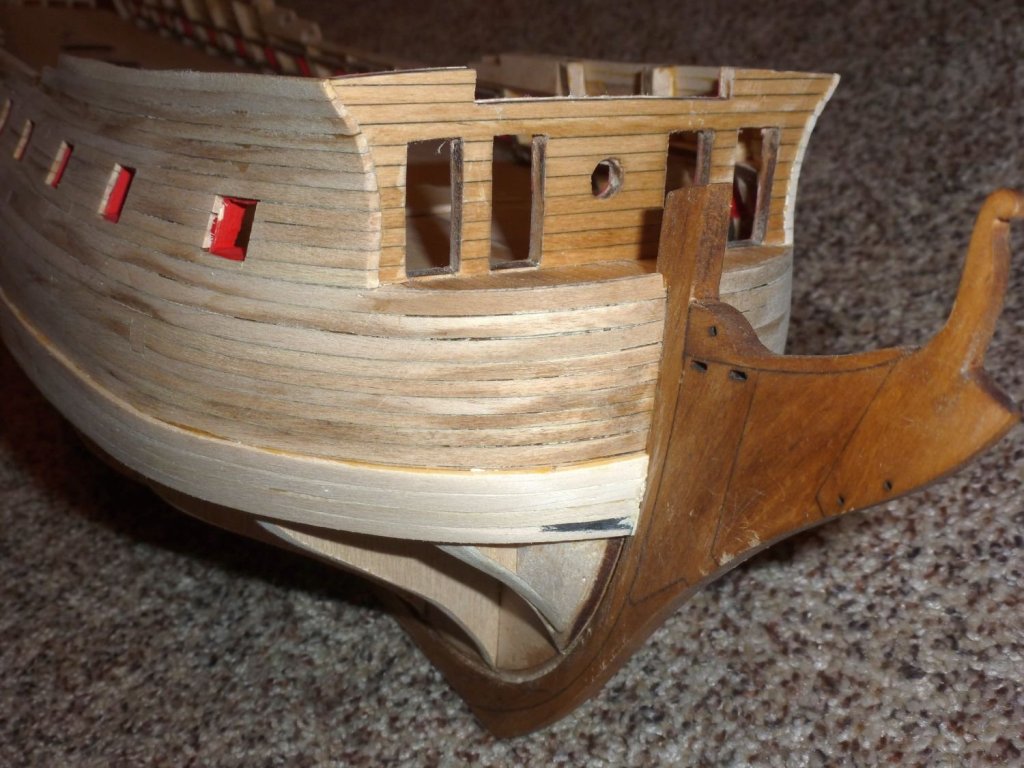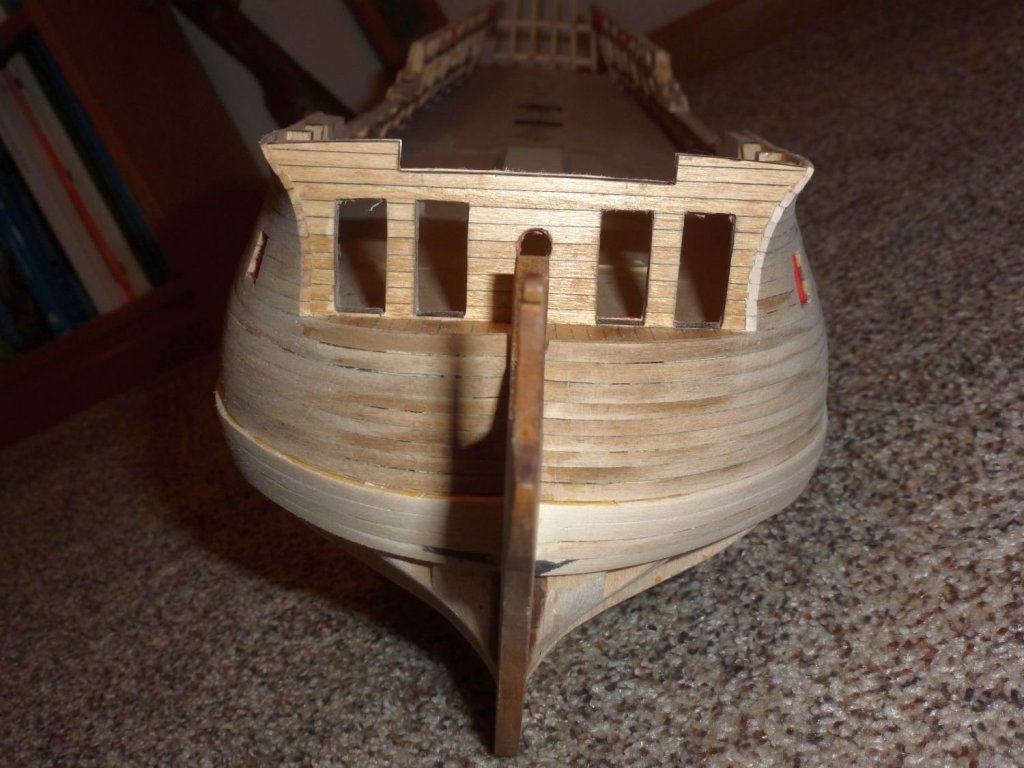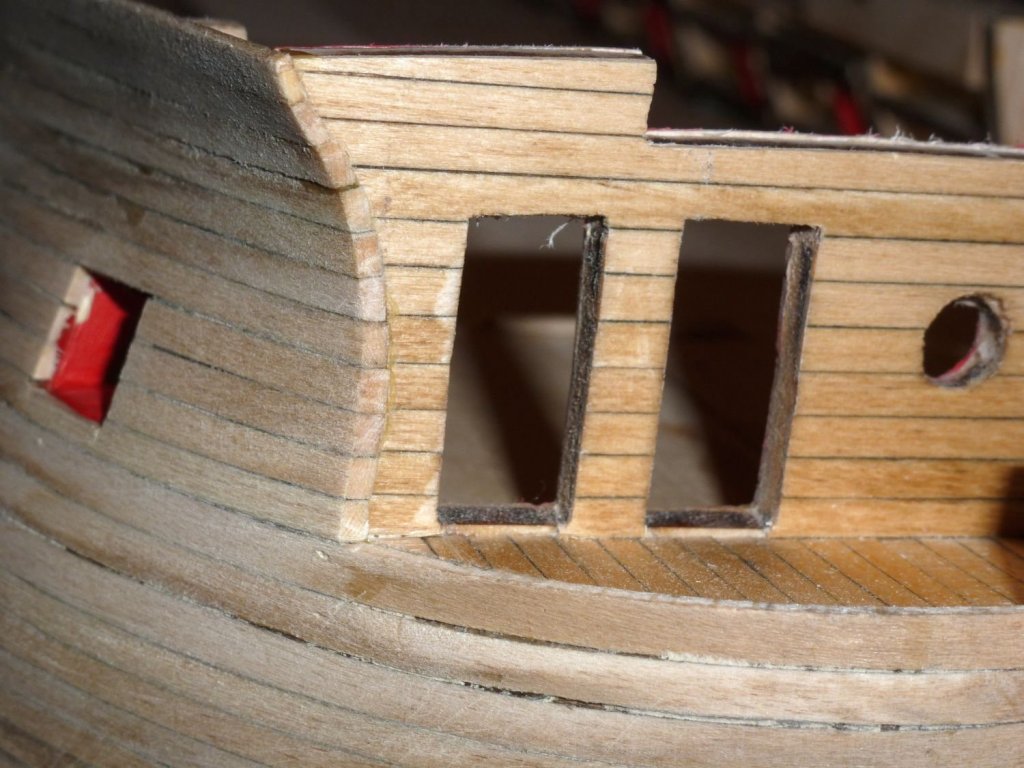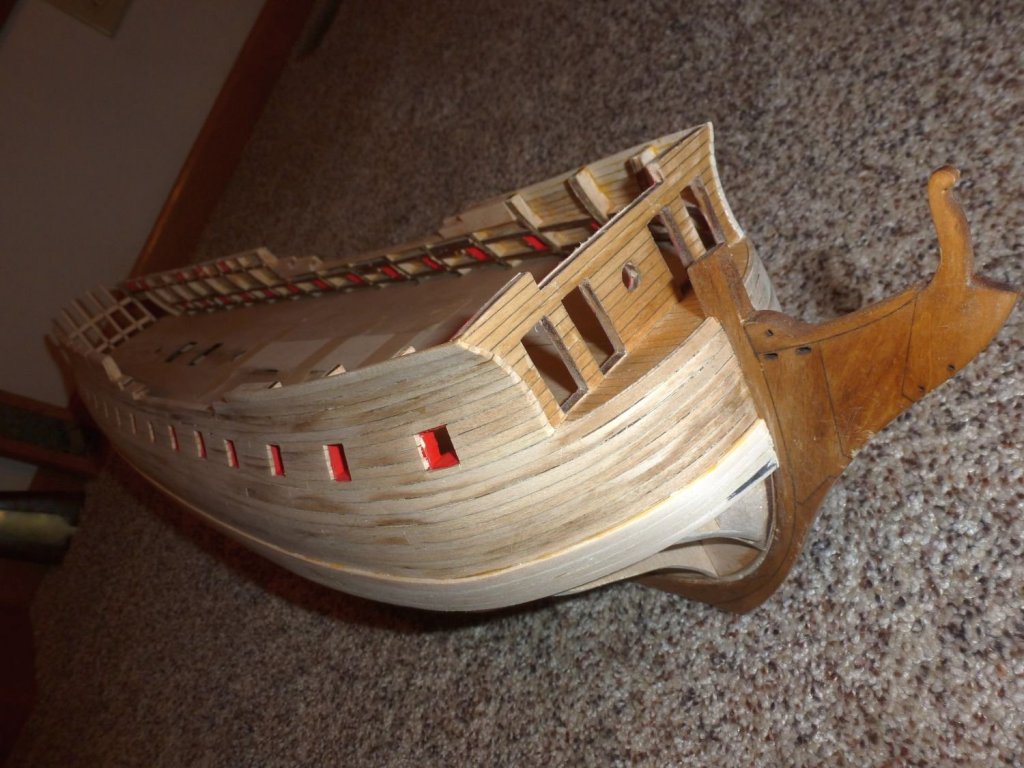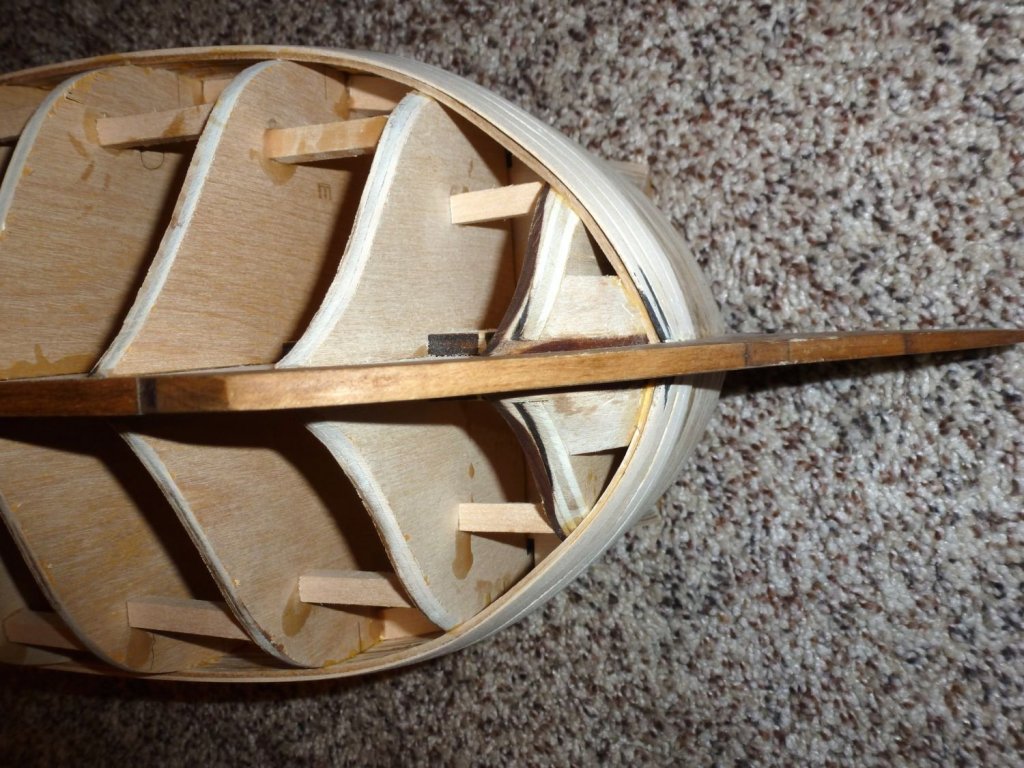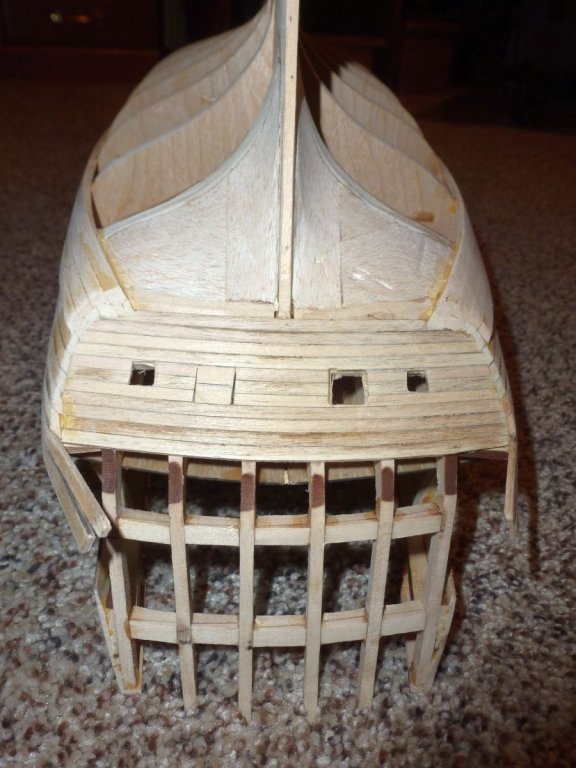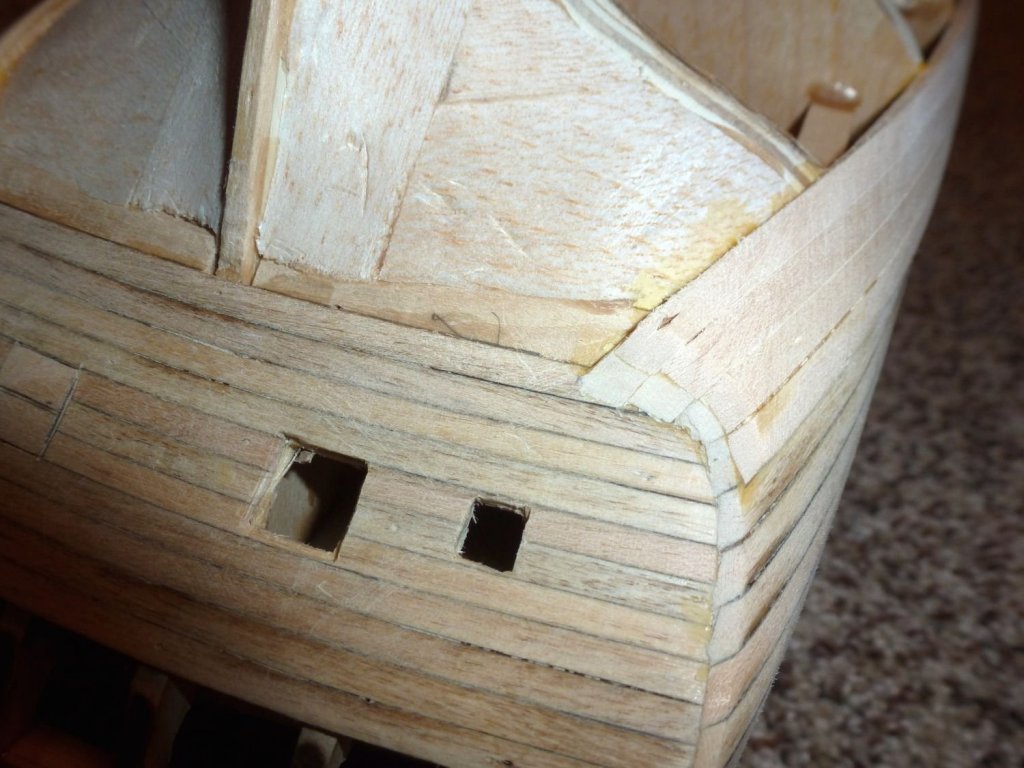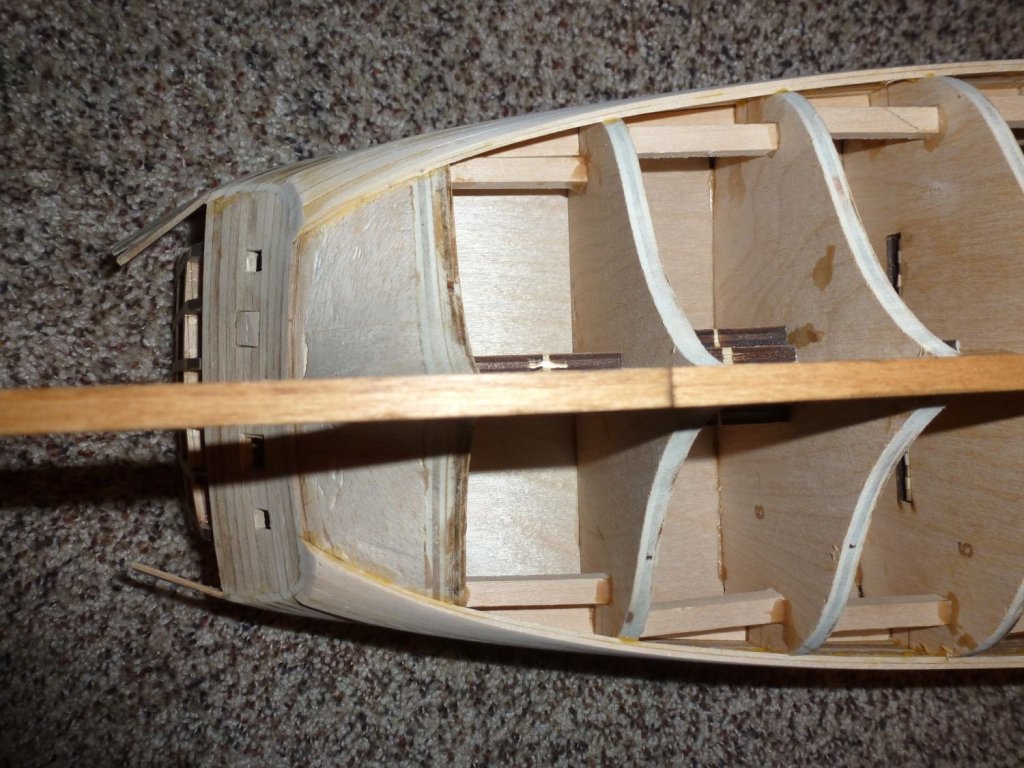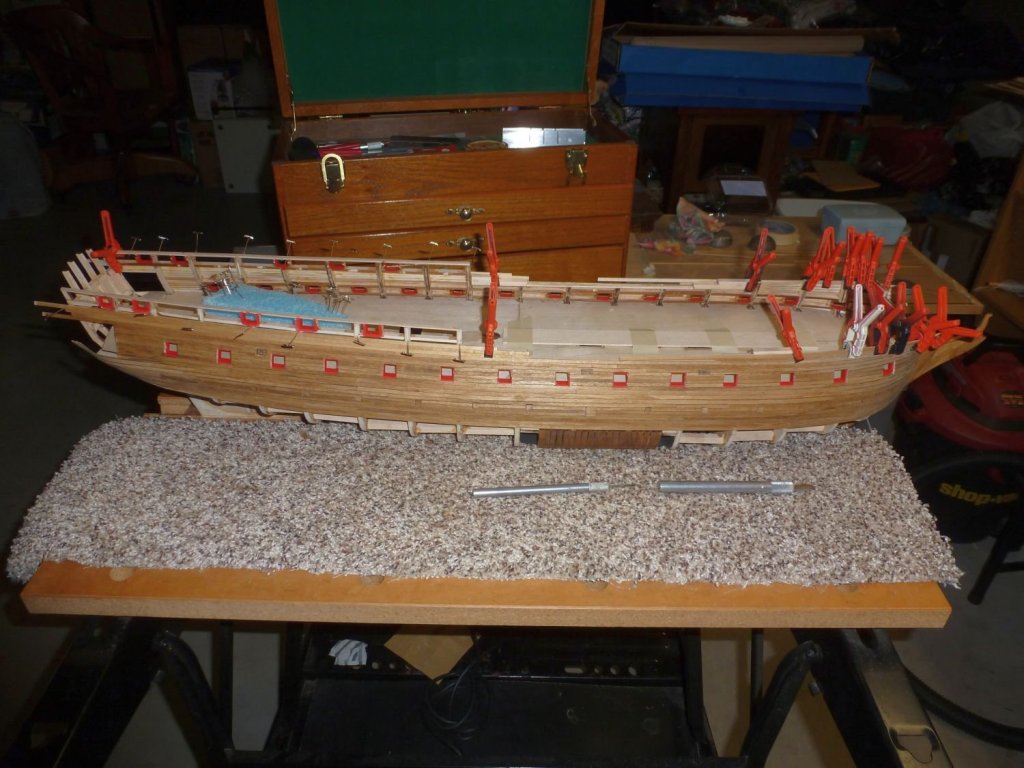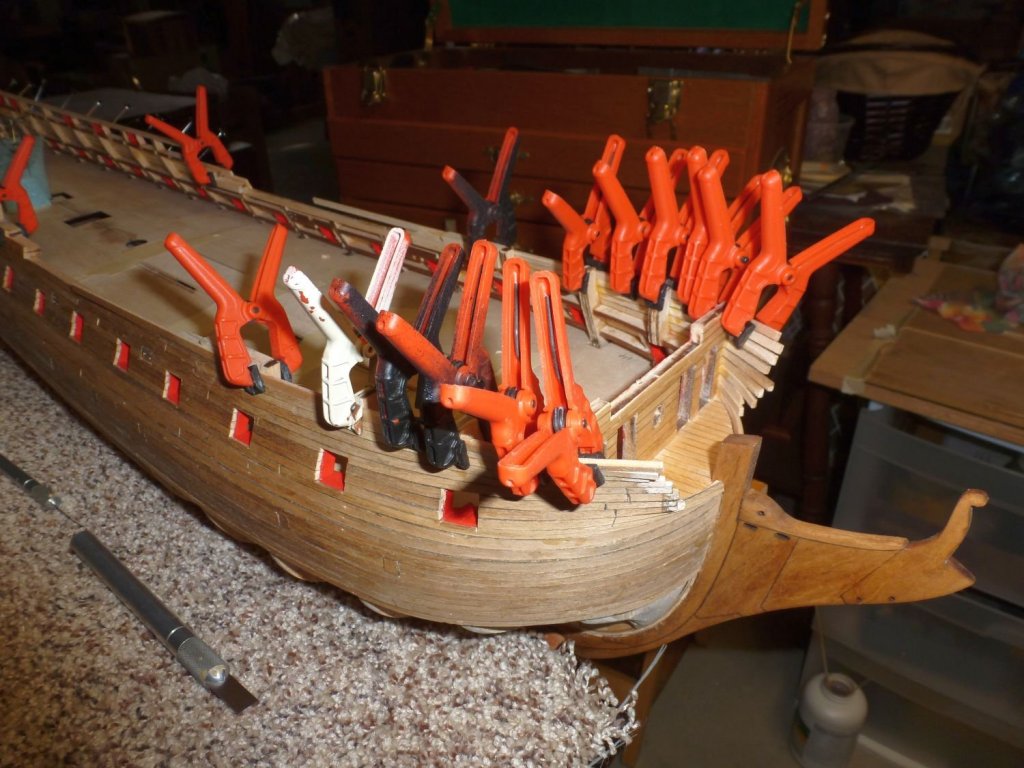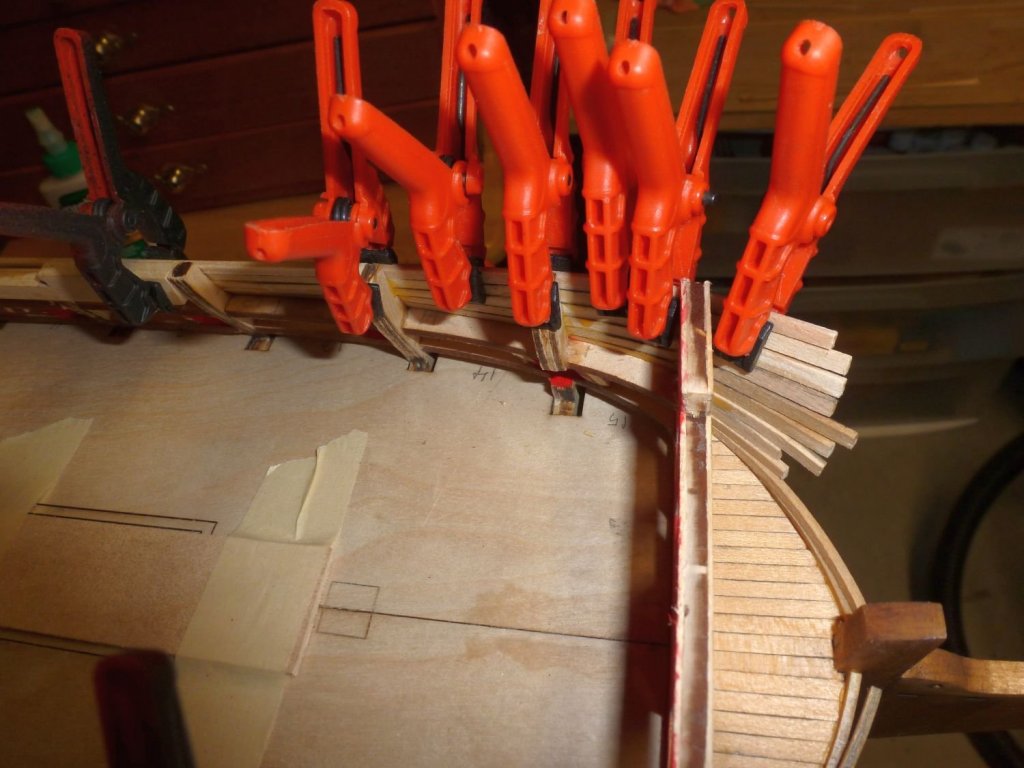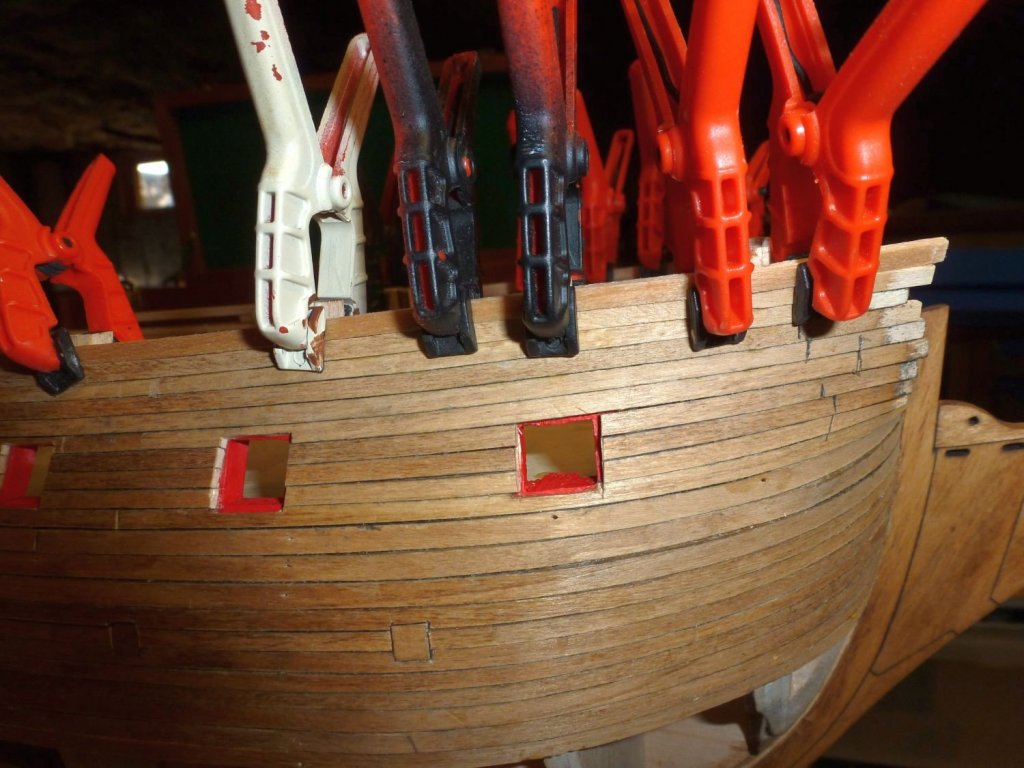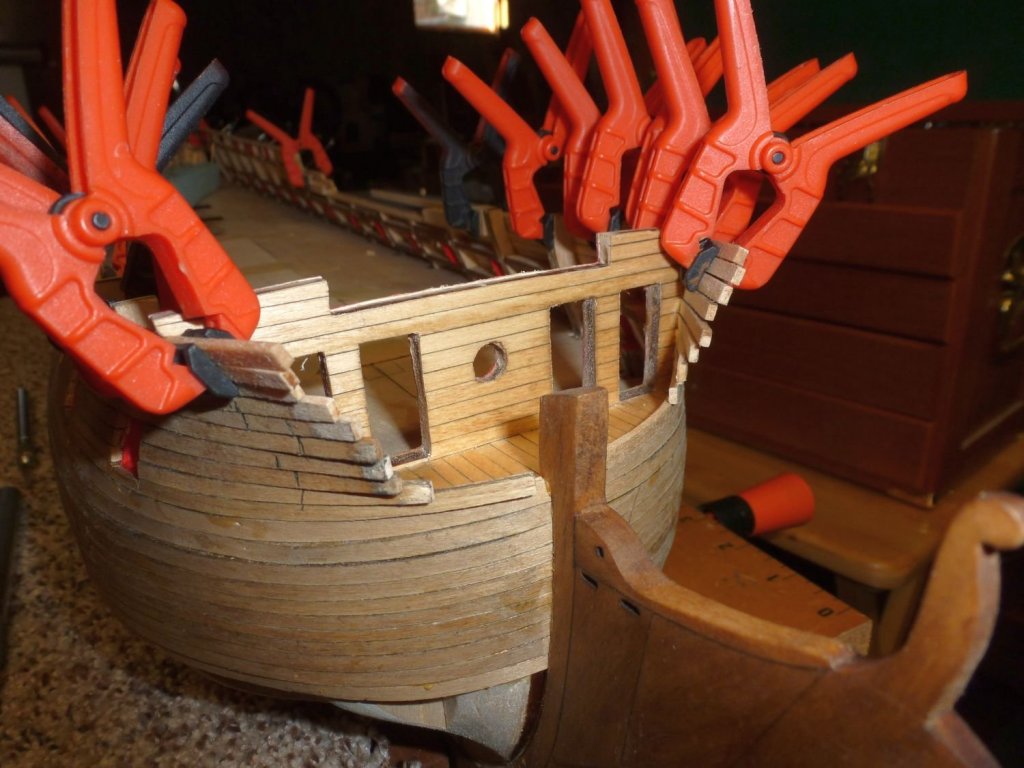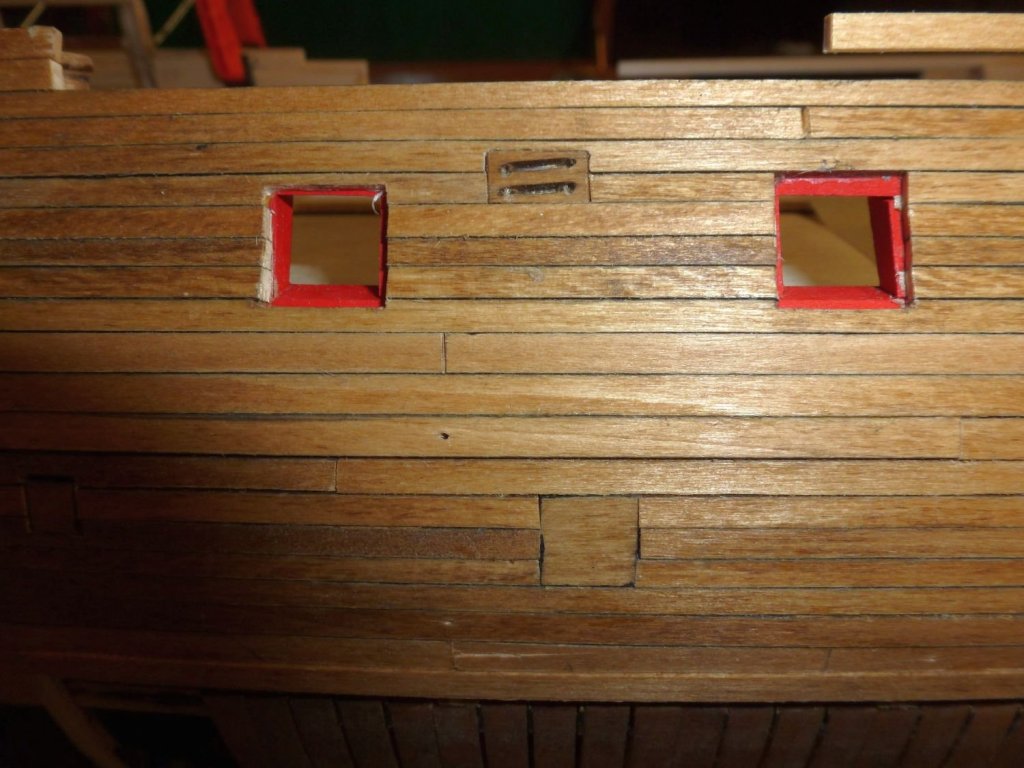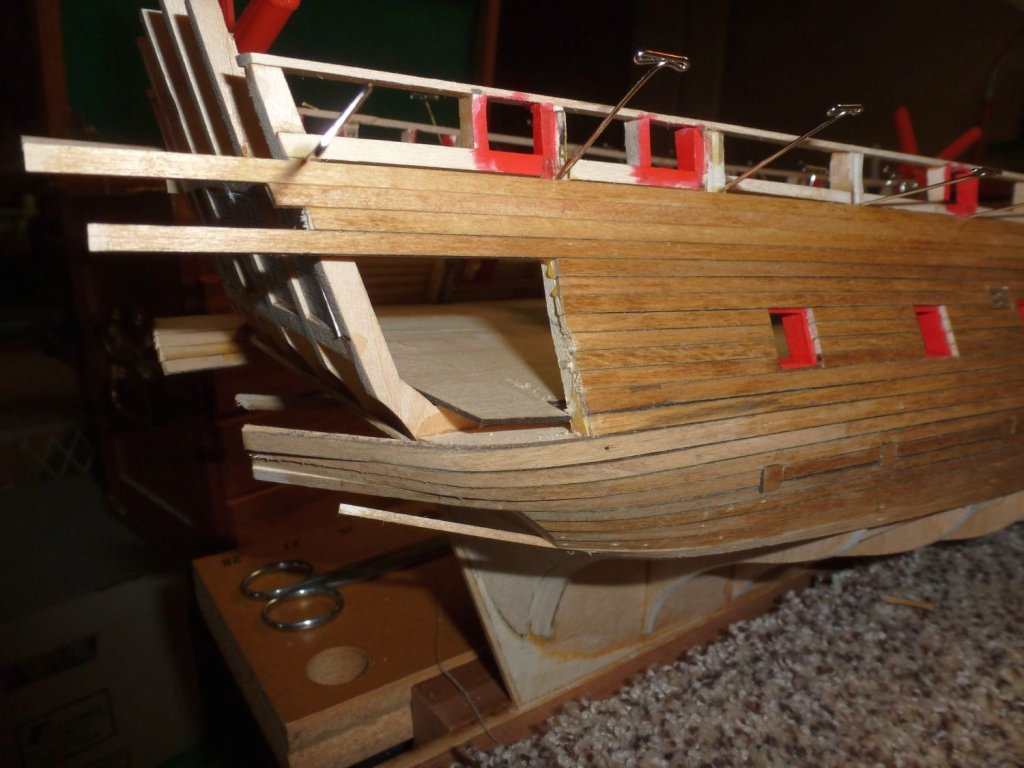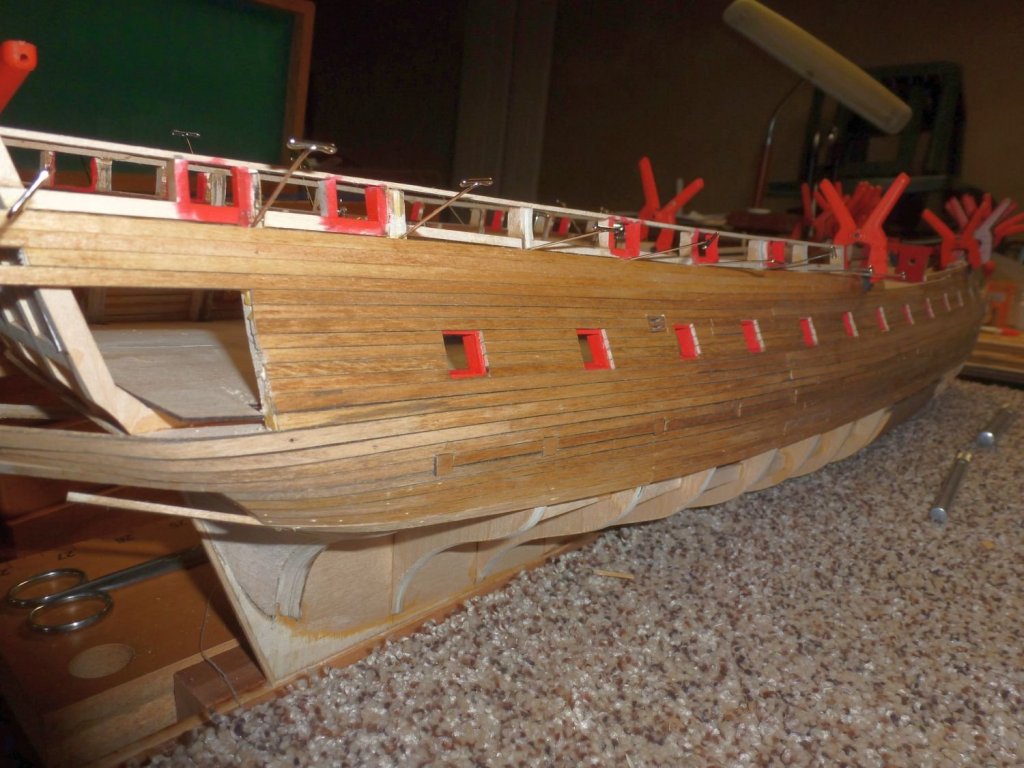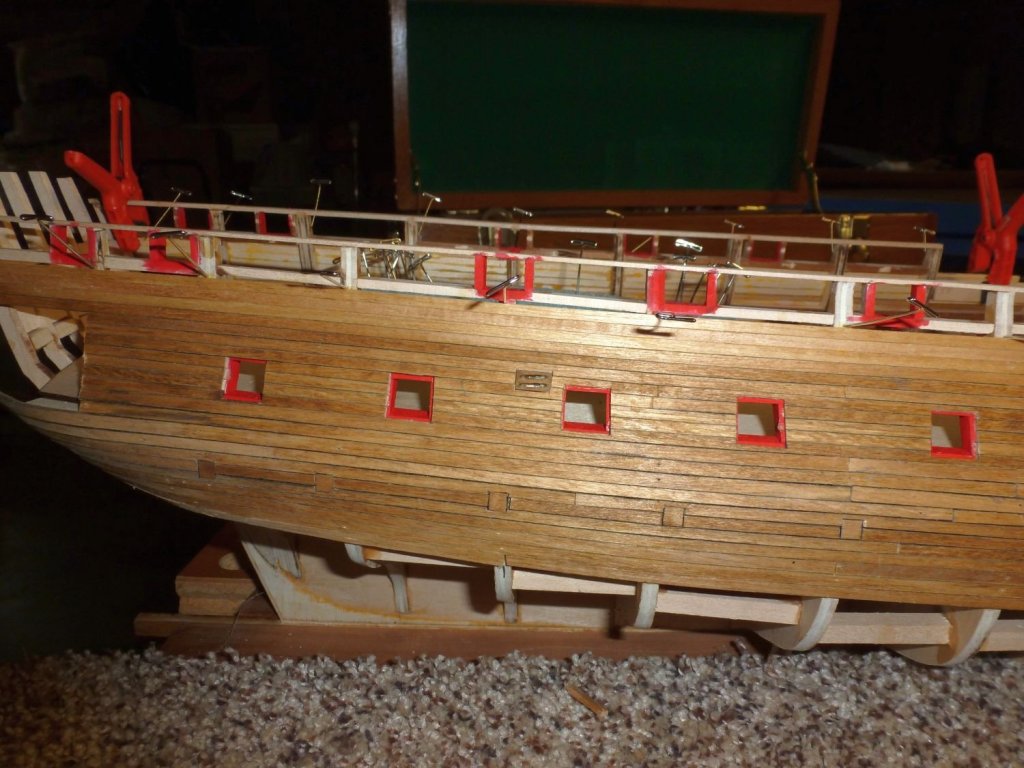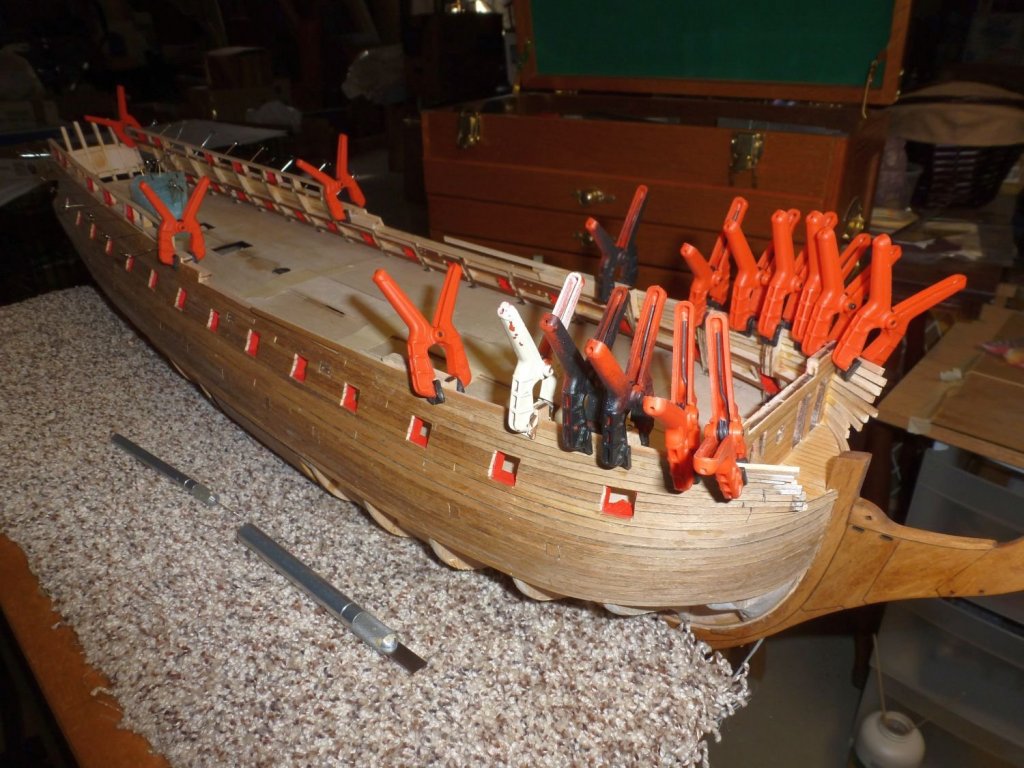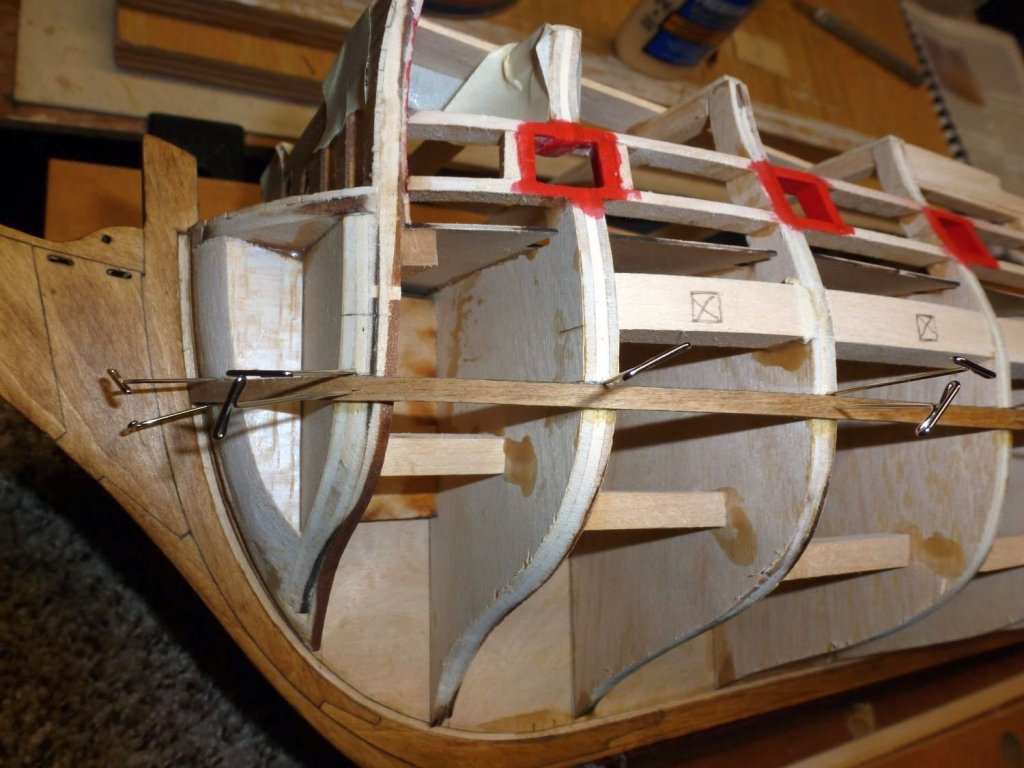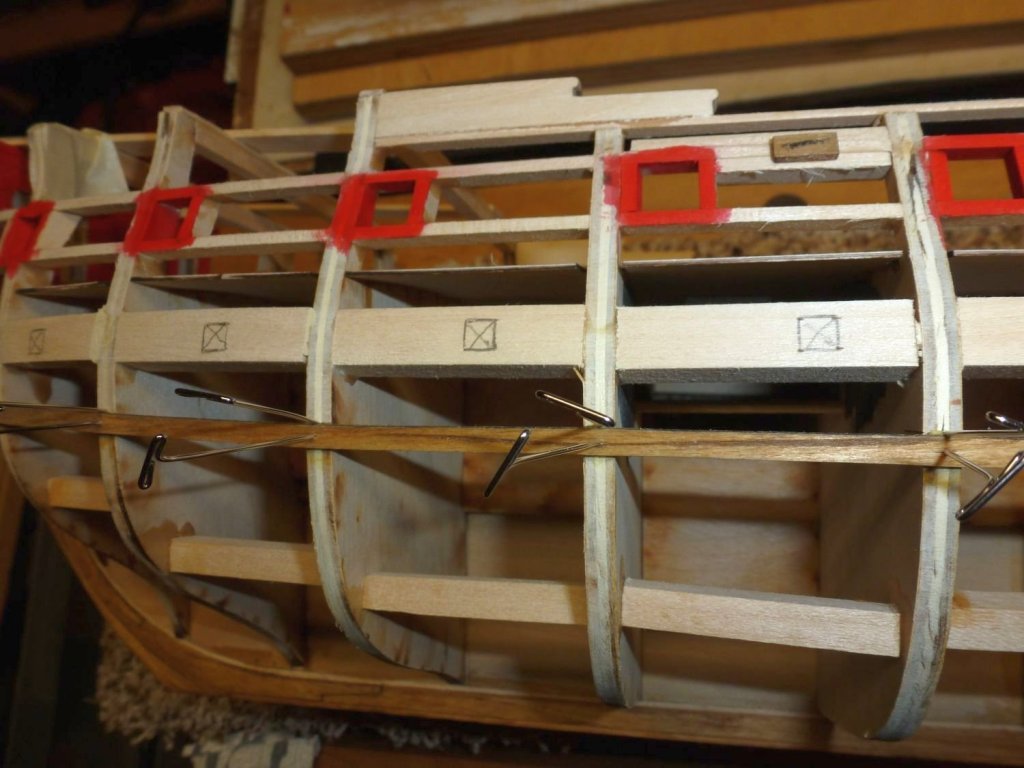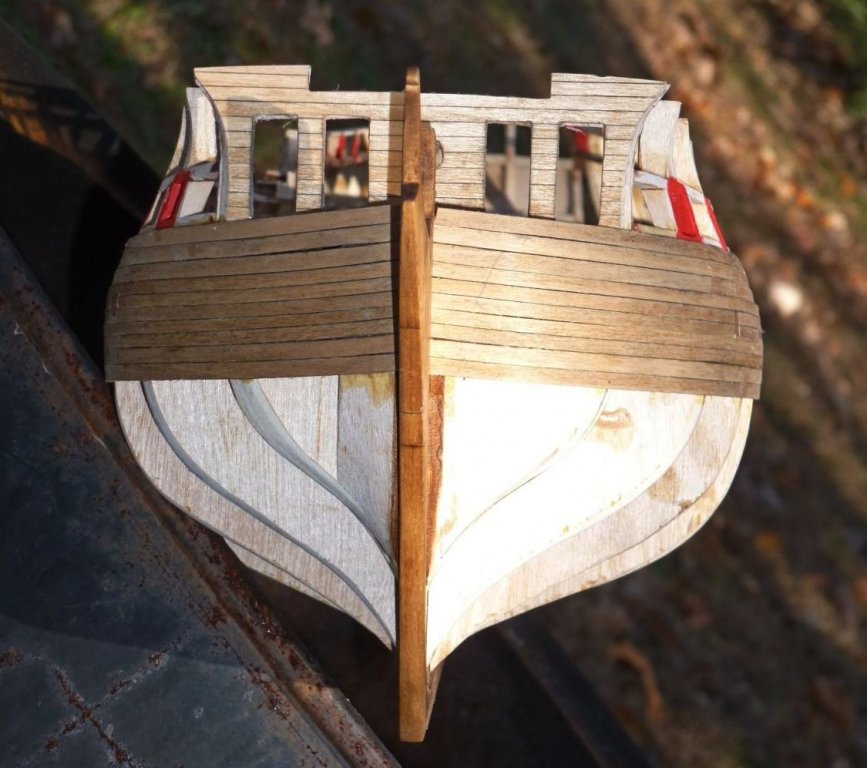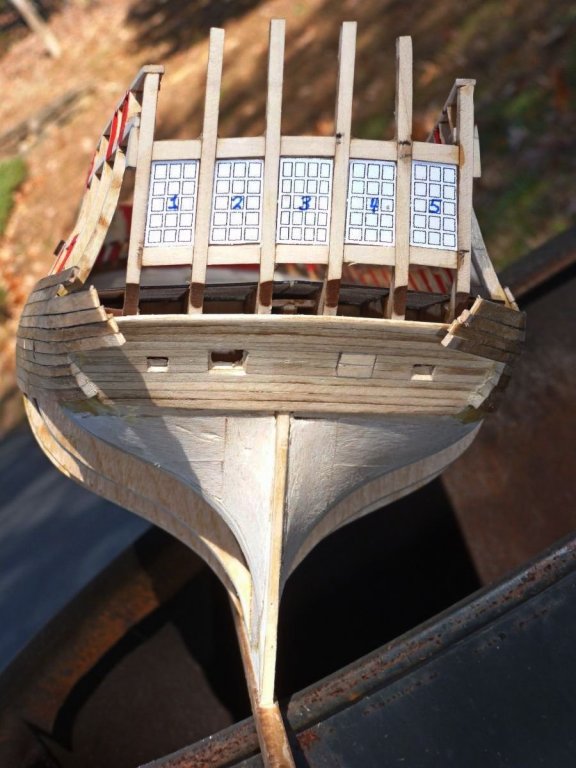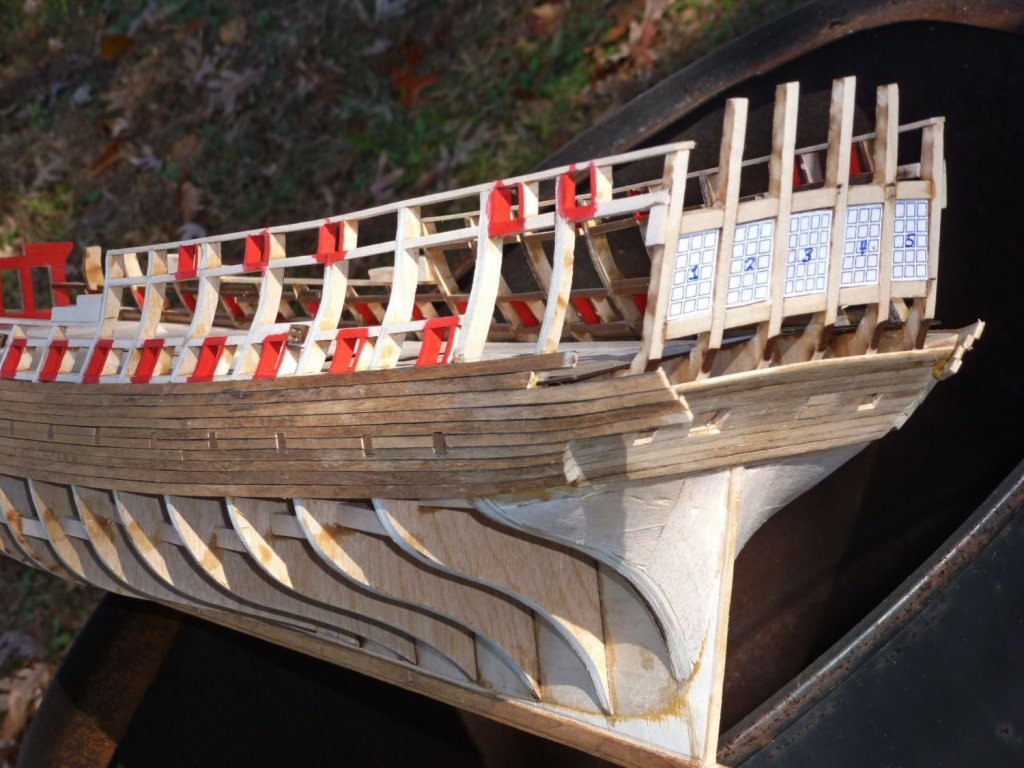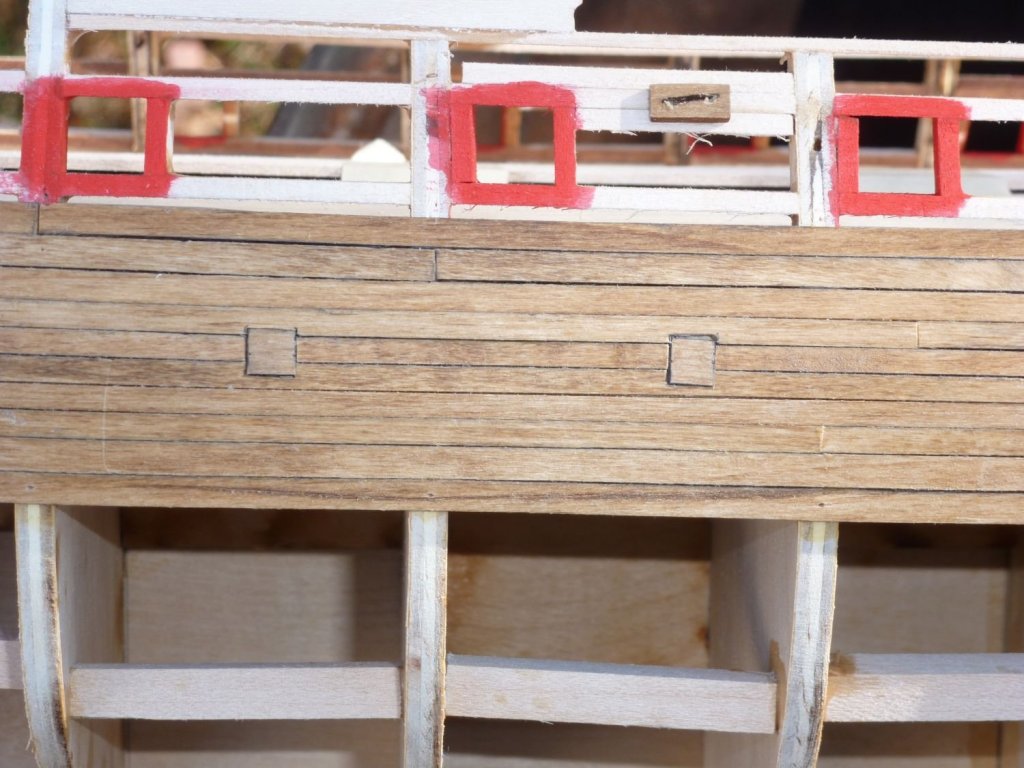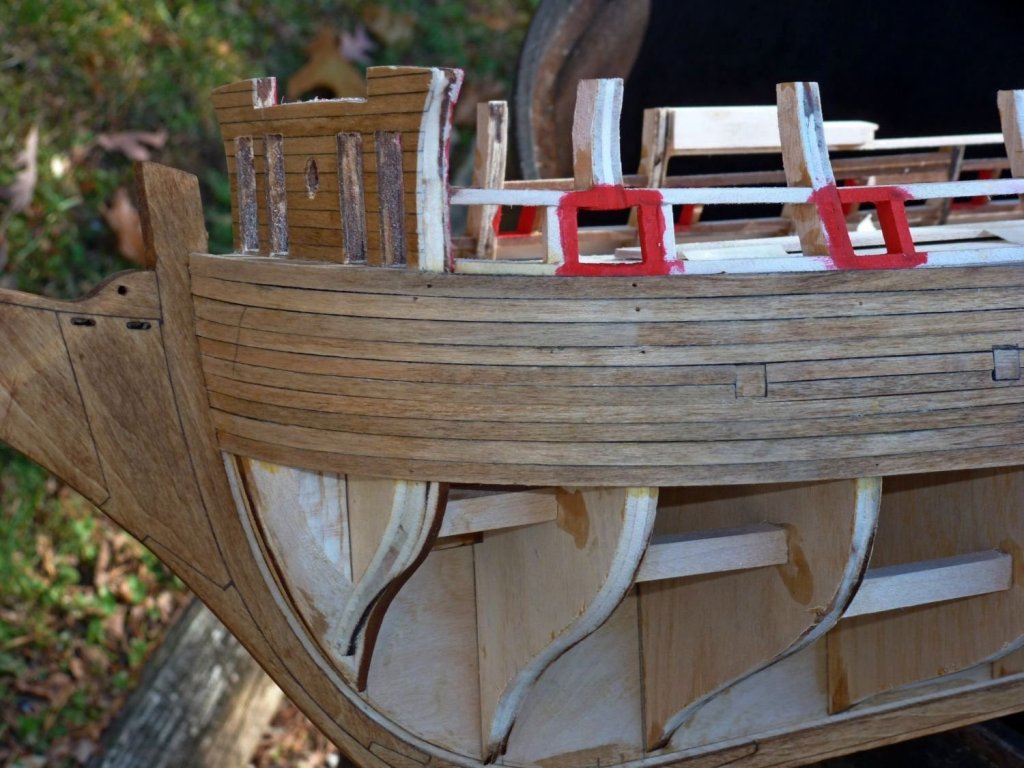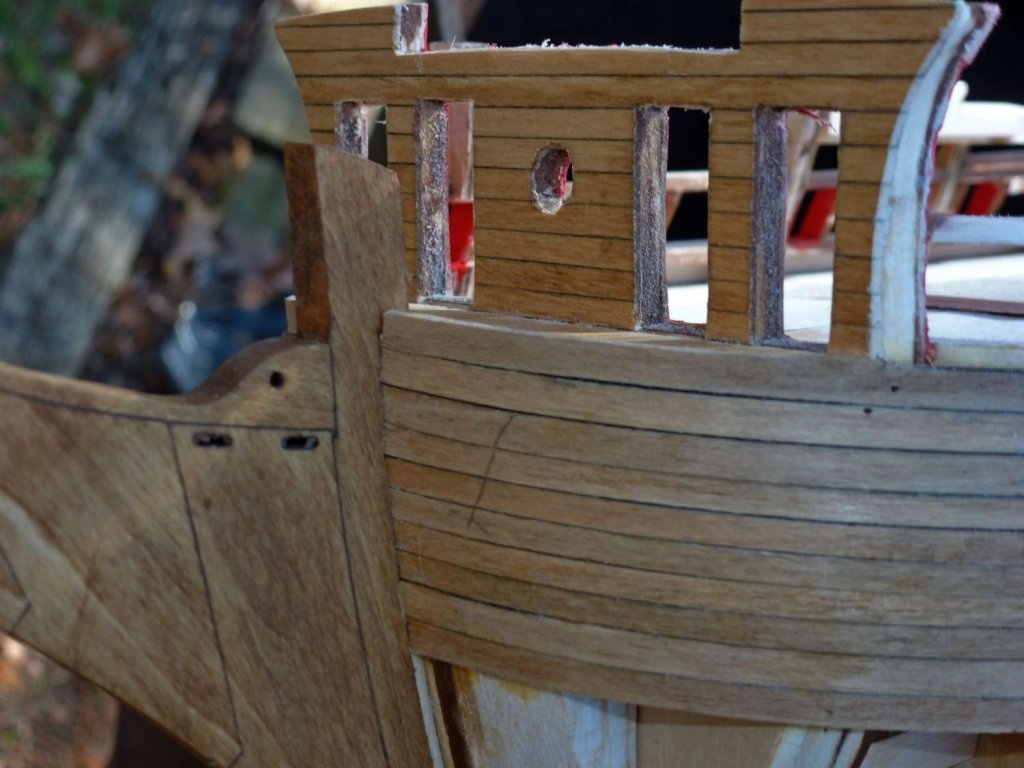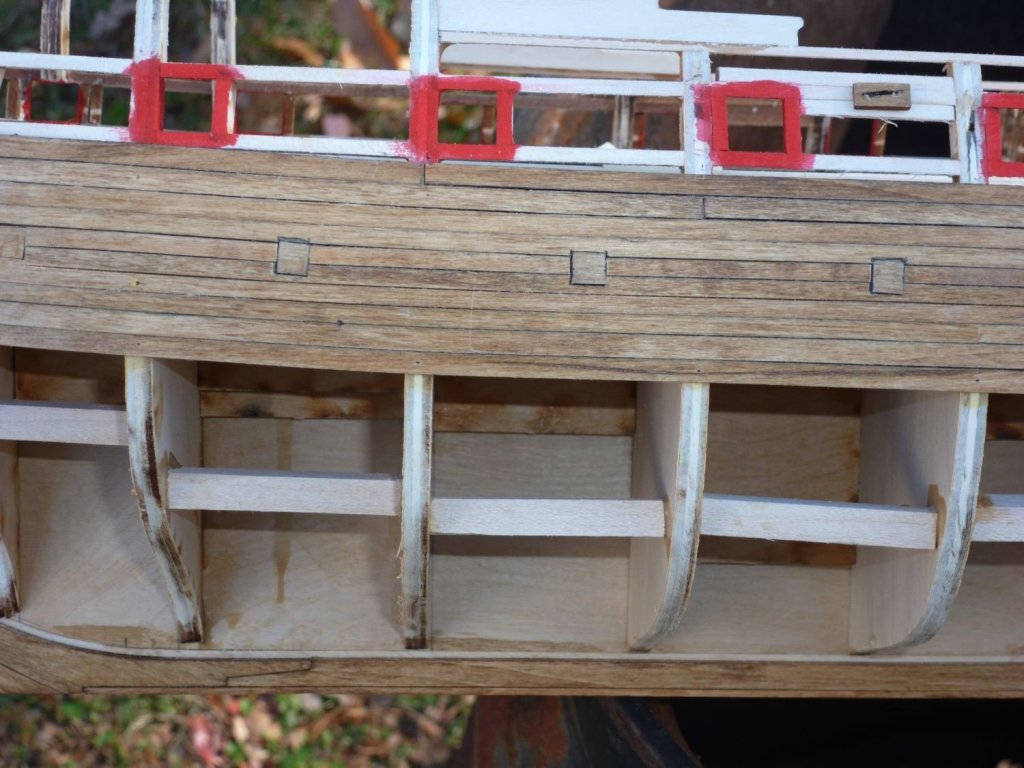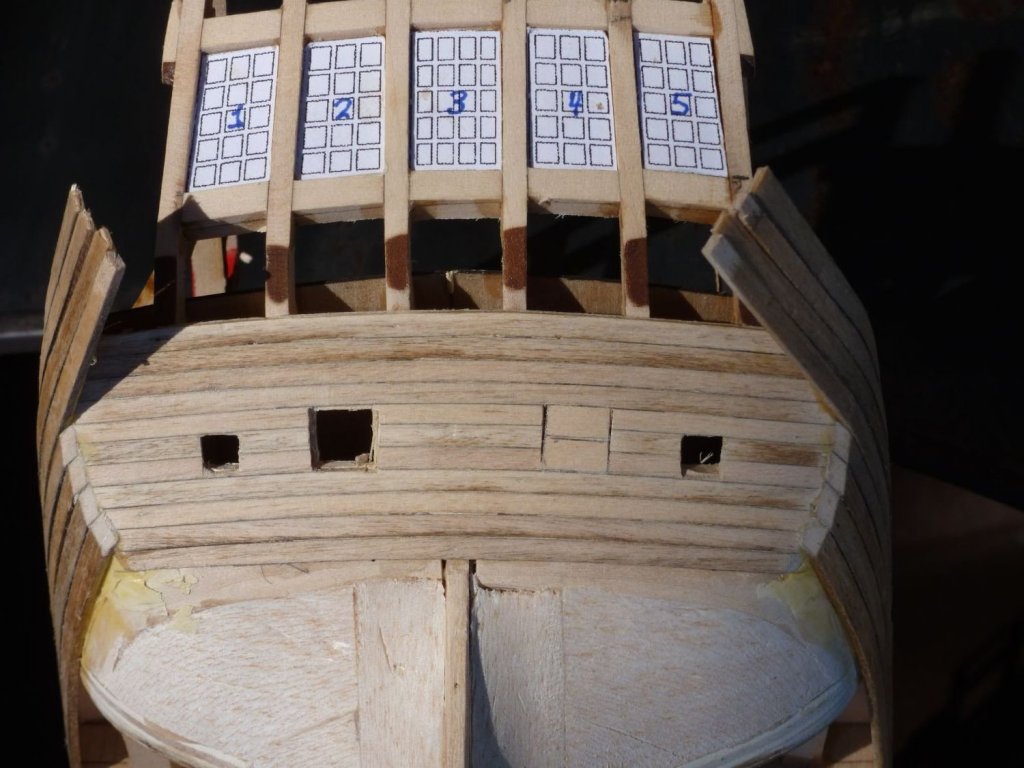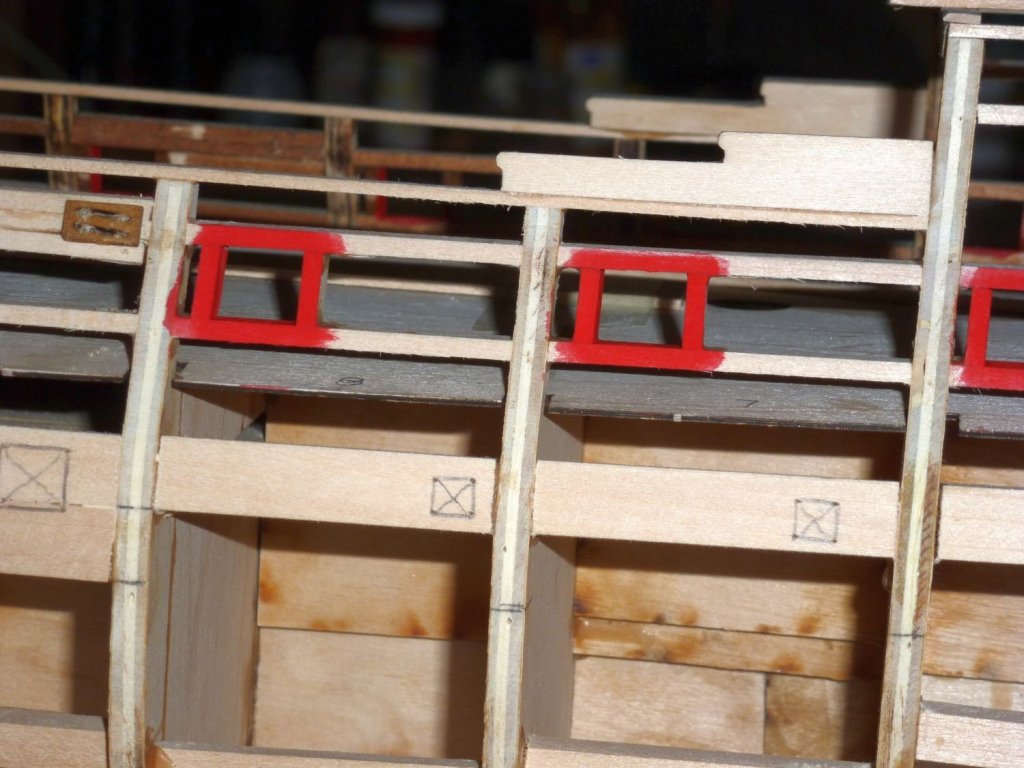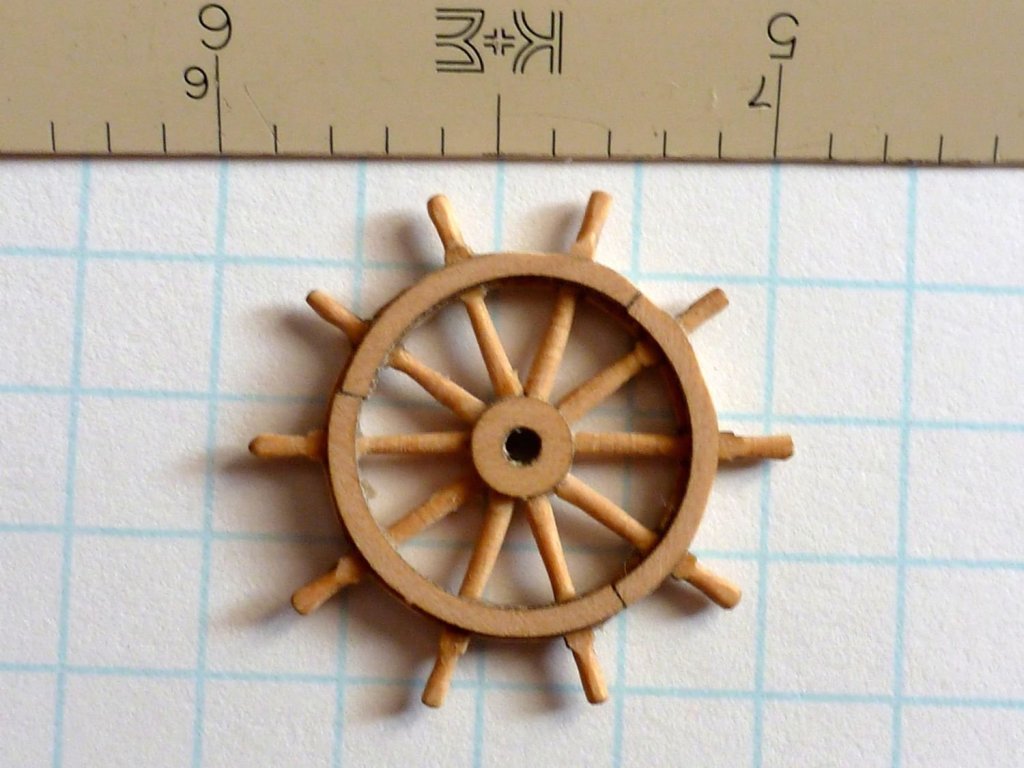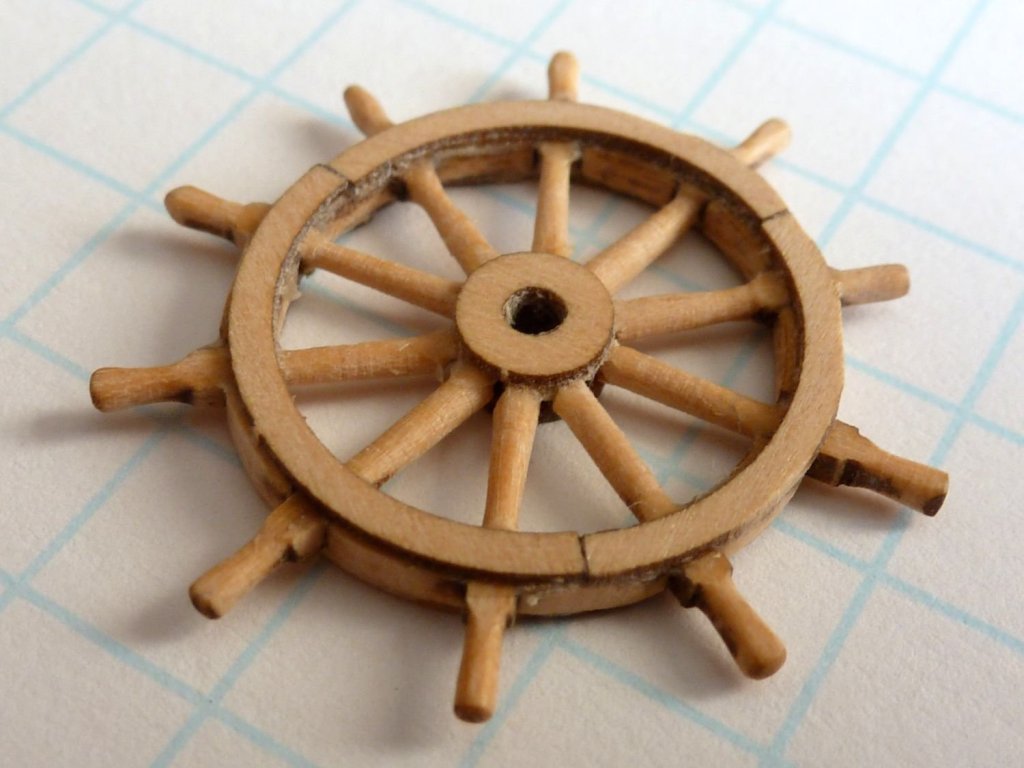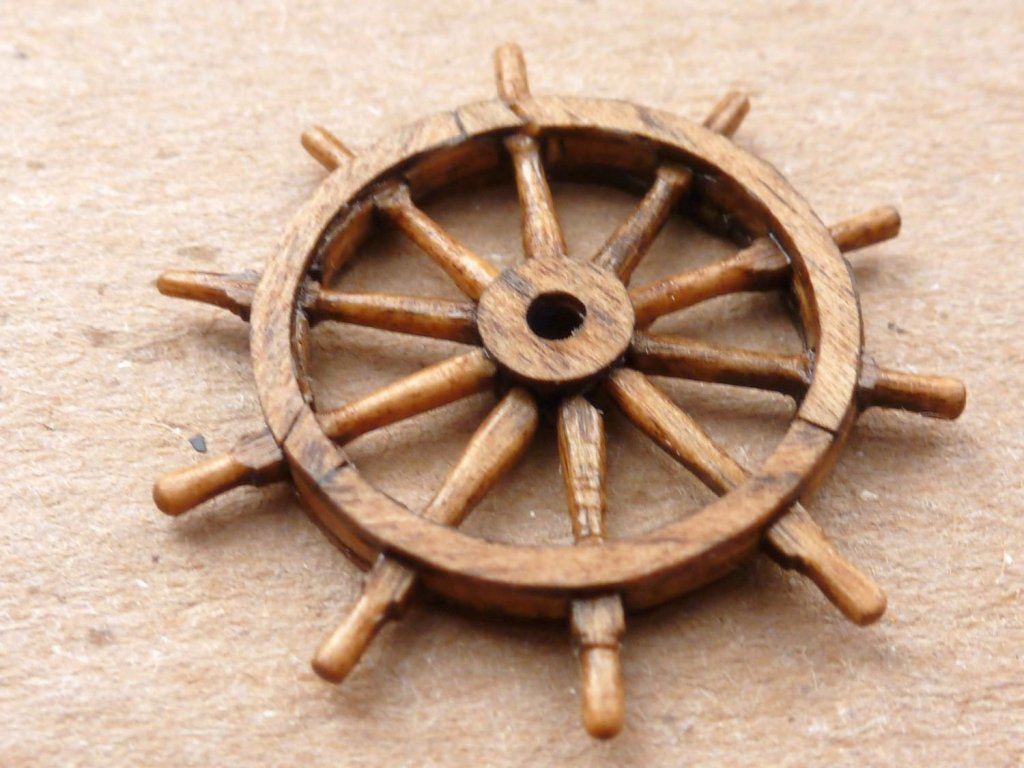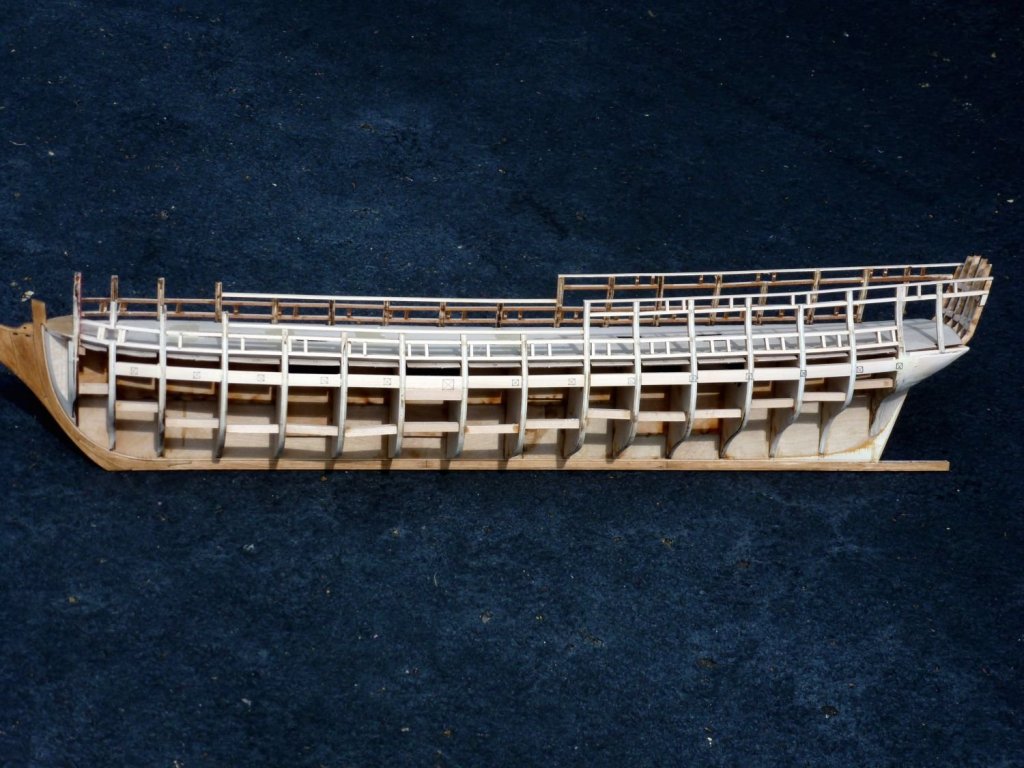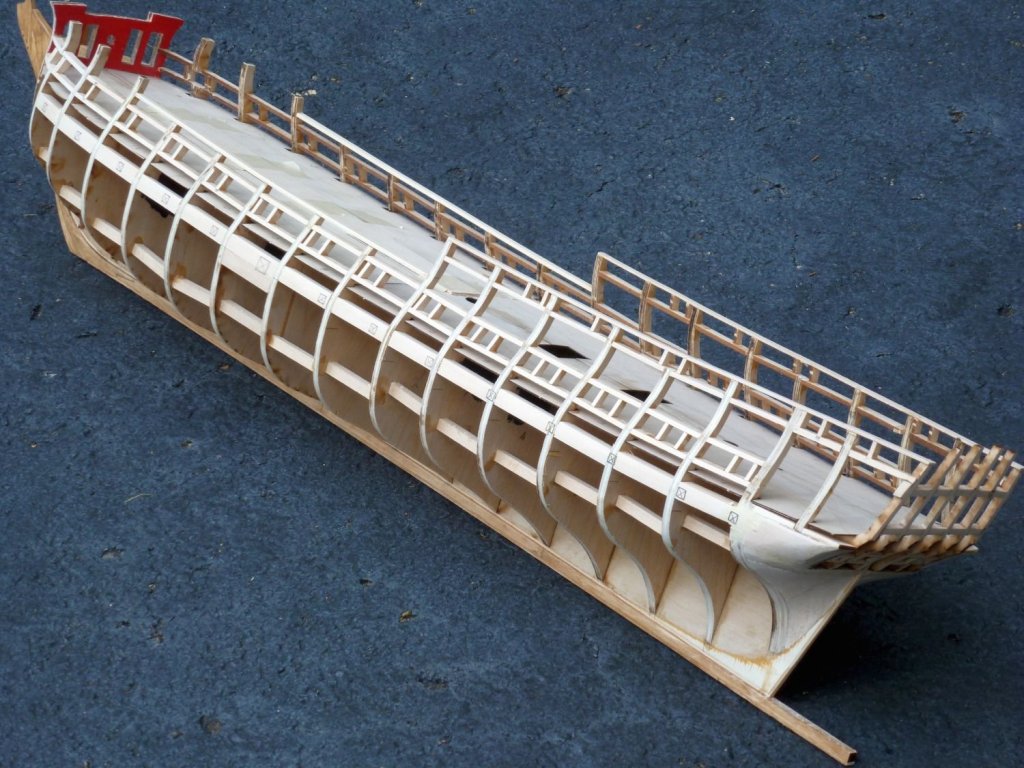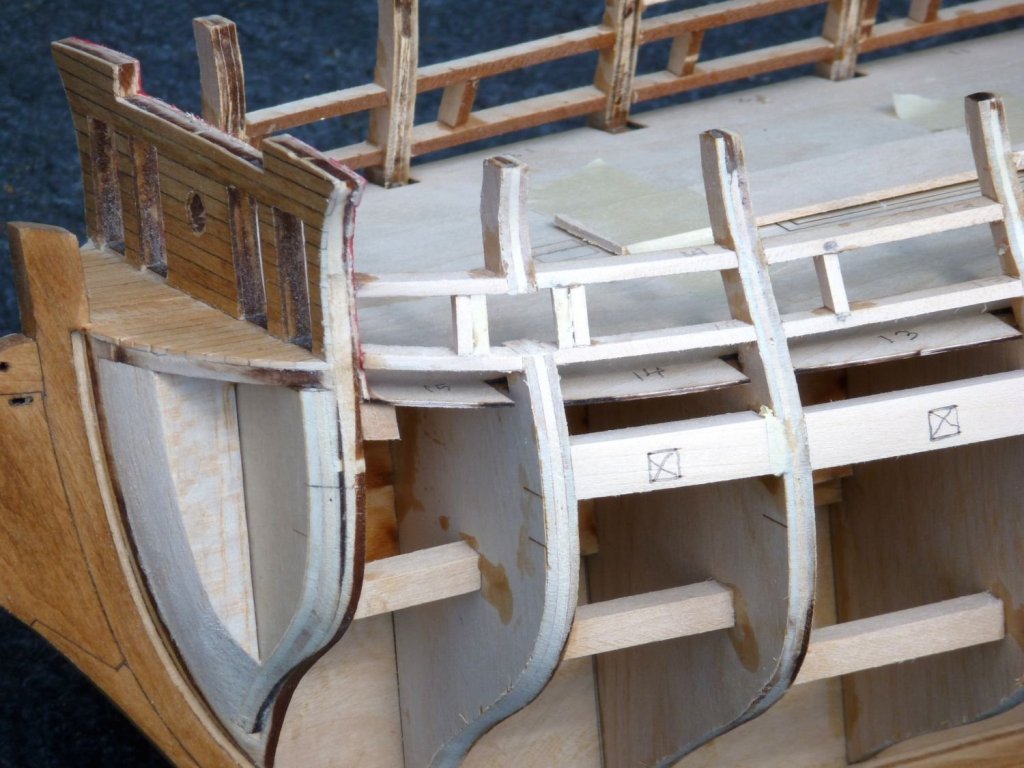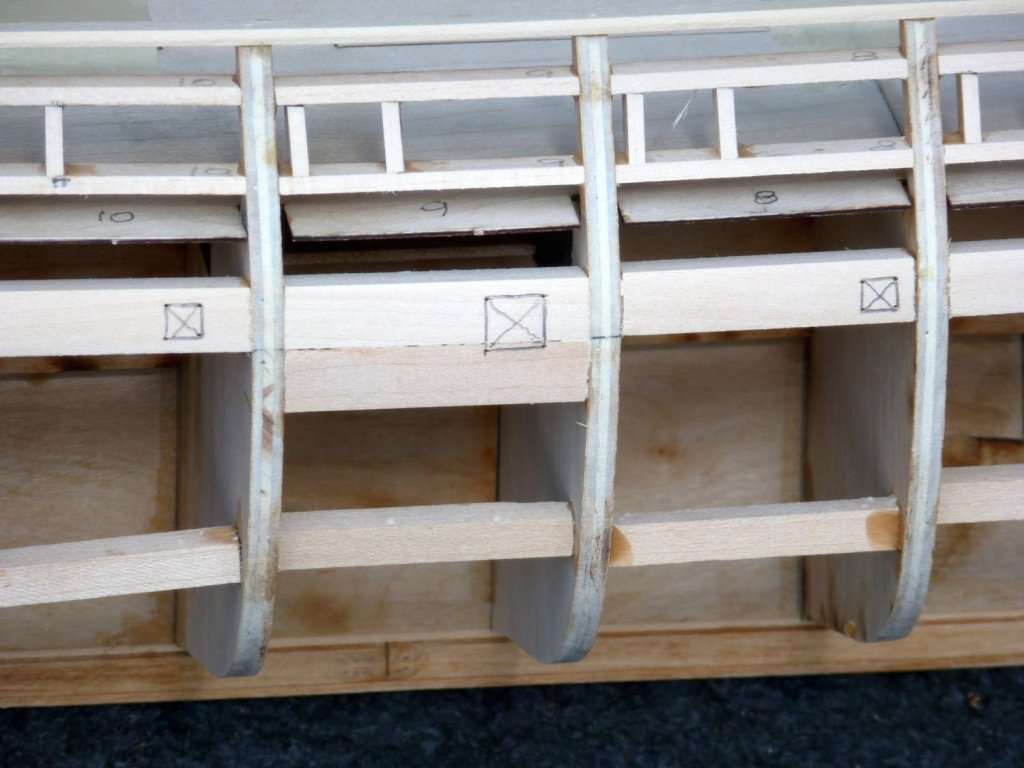-
Posts
276 -
Joined
-
Last visited
Content Type
Profiles
Forums
Gallery
Events
Everything posted by GaryKap
-
Hi John - Very nice looking model of the gunboat "Philadelphia". I am just starting mine. Thank you for your excellent build log with illustrations and discussions of problems your encountered along the way. This will make my work easier, but I am sure I will find new problems of my own to address. <<Gary>>
- 36 replies
-
- Model Shipways
- Philadelphia
-
(and 1 more)
Tagged with:
-
Hi Tom - I hesitate to bring this up, but your cannon are lacking capsquares. These are the iron fittings that cover the trunnions of a cannon and hold it in place. They are usually black in color. On a model, they can be made of brass or light cardboard and painted black. Or they can be simulated with black paint. I hope I am not too late in raising this small observation. <<Gary>>
- 163 replies
-
- Model Shipways
- Constitution
-
(and 2 more)
Tagged with:
-
Hi Tom - Looking very good! One observation regarding the rigging line. I don't much like the Model Shipways threads either, but the suggestion in the instructions goes a long ways to improving them. Soak and rinse the thread prior to use. That will take out the sizing and make the thread much more workable. I was amazed at the difference after doing this. Having said that, I also made good use of Coats Upholstery Thread that can be found at the local Walmart in both black and hemp (tan) colors. It is nice to work with and is much easier to tie knots with...and it is inexpensive. Of course this works best for smaller rope diameters. Your wonderfully detailed build log will continue to be a great help to future builders of this model. <<Gary>>
- 163 replies
-
- Model Shipways
- Constitution
-
(and 2 more)
Tagged with:
-
Hi Tom - With this ship model, the closer you look, the more "discrepancies" you will find between the plans, the photos and the instructions. I can't fully answer your question. For the long guns, I only rigged the breeching lines because I figured they would be not very visible in the finished model. (I did fully rig the carronades though). So it depends on how fully you are going to rig the long guns. The drawings at the bottom of Plan Sheet 2 are most helpful. I was able to use the provided brass hooks for the breeching lines on the long guns but gave up with the carronades and simply tied the rigging lines to the eyebolts. <<Gary>>
- 163 replies
-
- Model Shipways
- Constitution
-
(and 2 more)
Tagged with:
-
Hi Tom - Your model is looking very nice. A couple of thoughts. First, a reminder. Make sure all of the pieces/parts (pump parts, cannon, fife rail etc.) are securely glued down in the appropriate places. Remember that the hull needs to be upside down for an extended period of time while you are coppering and stuff can work loose (speaking from experience). At that point it is MUCH more difficult to return a wandering part to its proper location. This comment does not aim so much at the mast surrounds) Second, the idea of only half planking the spar deck. I considered that too, but in the end I decided against doing it for three reasons. The complex deck framing for the spar deck would obstruct much of your view of the gun deck. It would be more difficult to place the carronades, and all the other stuff on the spar deck without decking to provide the proper spacing. And a third reason...I simplified the rigging on the long guns of the gun deck and that might have been more visible if the spar deck was not planked. I will be interested to see what you decide to do. <<Gary>>
- 163 replies
-
- Model Shipways
- Constitution
-
(and 2 more)
Tagged with:
-
Hi Tom - Your build log will be a wonderful guide for future builders of this kit. I also had trouble figuring out the "knees" and your photos would have been of help to me. For me, the instructions are sometimes lacking and the sentence structure difficult to follow. I relied more on the pdf electronic version than the printed version - partly because the photos were clearer and could be enlarged. Happily, most of the parts fit together well. One item that deserves special attention will be the gun port frames (page 38 of the instructions). Make sure the gun port openings on the gun deck and spar deck line up EXACTLY with the openings in the hull exterior wall gun port openings. Chance of error is in the fore and aft alignment of these parts. Even small differences will make it more difficult to set the gun port frames. The instructions have you assembling the gun port frames completely and then inserting them into the gun port openings. I could not do this and opted to install them piece by piece; first the outer frames and then the inner frames. Keep up the good work. I look forward to seeing your progress. <<Gary>>
- 163 replies
-
- Model Shipways
- Constitution
-
(and 2 more)
Tagged with:
-
Hi TomCulb - I am also building this model of the USS Constitution cross-section. I am currently rigging the main yard (page 82 of the instructions). From my experience - definitely DO NOT remove that part of the frame that you have circled above. The ladders will fit just fine. You are doing a great job on your build and an excellent job documenting your progress. I found this to be one of the most enjoyable ship models that I have built to date. I hope you find the same to be true. In a future post or posts I will offer some suggestions that may be helpful. I see that you live in Spokane. In the early '90's I lived in Couer d'Alene. Beautiful country. <<Gary>>
- 163 replies
-
- Model Shipways
- Constitution
-
(and 2 more)
Tagged with:
-
Hi Jim - Thank you for your kind words. I have not been active on this web site in a few months. My wife and I have moved into a "patio home" - a compact two bedroom unit that is one of four on a concrete slab. My work space has been reduced to a 2 foot by 3 foot work table in the second bedroom. Because of the need to downsize, I had to give this model of Benjamin W. Latham - and others - away for want of space. But I am still managing to work on my "Confederacy" with its three foot hull. The work table does OK and I can take the hull outside for sanding. This model has a LOT of fine detail work that should keep me occupied for several months. And that is the real enjoyment of this hobby of ours. On the other hand, I have absolutely no idea where I will display the finished model. I am considering donating it to our local library to be auctioned off and provide funding for books and supplies. In the days to come I will post to my Confederacy build log and provide a progress report and some pictures. <<Gary>>
- 50 replies
-
- benjamin w latham
- model shipways
-
(and 1 more)
Tagged with:
-
Dirk, I really do appreciate having you there looking over my shoulder. I would much rather go through the thought process as we did above than make some major error in my construction. Like we say here in the U.S. "If you see something, say something!" and that applies equally to model ship building. In the near future I hope to be doing the stern and quarter galleries and I will be looking to you for guidance after the stunning job you did on your Confederacy build. John, thank you for your kind words. Harley thanks for your thoughts. Jeez; when they said this kit was for advanced builders, I thought they meant advanced in years . My advice is to plank the third belt from the top down. That way you can hide your planking mistakes along the bottom near the keel. You, me, and the other Confederacy builders all try to do the very best job that we possibly can and when our result does not measure up to our expectations we can get frustrated. Thanks to you all for letting me vent.
-
Thank you guys for the "likes". They are always welcome and give me encouragement. And thanks to Russ, John, Jim, Mike, alde, and Dirk for your comments. It is probably true for each of us that we are our own worst critic...except for the Admiral, that is. Jim, I will be looking for your build log. Mike, the color below the wales is just the naked basswood; not even finish sanded yet. Dirk, I appreciate your watchful eye, but in this case I think you are mistaken. Take a look at the Instructions on page 65. It says "There are three laser cut pieces for the rudder. They are 1/4 inch thick (R1, R2, and R3)." Take a look at the plans and sheet H. I believe I have the correct part in the right place. Happily, it is not yet glued in so any change will be easy. What do you think?
-
Jesse - I can only echo what the others have already said. Our love for our pets is almost as great as their love for us. I know that I grieved long and hard when I lost a dog. Hard to say good-bye. I understand and sympathize. <<Gary>>
- 1,306 replies
-
- syren
- model shipways
-
(and 1 more)
Tagged with:
-
I have finally finished planking the hull below the wales and adding the second (final) layer for the main wales and channel wales. The pictures are below, but I would like to add some thoughts and recommendations for future builders. I lulled myself into believing that Confederacy, although HUGE, would be an easy hull to plank. She is NOT. This is the fifth ship model hull that I have planked and the result is not even close to my best work. My fault...I did not follow the directions. (I did not understand their implication). On page 52, Chuck says “The forward end of the garboard strake should be glued to the center of bulkhead “E” as shown in the photo provided. It should not start forward of this bulkhead.” Well I disregarded this because the garboard strake ran nicely much farther forward. What I failed to realize was the resulting decrease of space at the bow necessitated a more severe taper at the bow of all planks in between. Also the shape of the hull is such that planks need to taper not only at the bow but also at the stern to Bulkhead 8 and then flare out again necessitating stealers between Bulkhead 8 and the transom. But the job is finished and most of my “fixes” are near the keel and will not be noticed in the completed model. On a positive note, Chuck includes a “spiling guide” that he describes on page 51. This thing is WONDERFUL!! and results in a much smoother run of planks than would happen otherwise. I strongly encourage future builders to use it. I also did a LOT of sanding the inside of the bulwarks to decrease their thickness but still have a ways to go. Another caution for future builders. When you do this, do NOT sand “freehand” just holding the sandpaper against the surface. The plywood bulkhead extensions are much harder than the soft basswood gunport frames and freehand sanding would create concave surfaces between the bulkhead formers that would make planking difficult. My solution was to glue sandpaper to a piece of plywood 1/8 inch thick and 3” x 3” to get the smooth even surface down to the false decking. I will continue to work sanding the inside of the bulwarks. I also need to add the fancy molding along the hull. I am still undecided about whether to treenail or not. Then I will start on the Stern and Quarter Galleries.
-
Jesse - Yeah, but I seem to remember when visiting HMS Victory being told that each sailor had TWO hammocks...one to use and one to air out . Seems to me that the key thing is that you fill the netting with hammocks. There is the famous quote that "all models are wrong; some are useful". It was aimed at mathematical models but certainly applies equally to ship models. Here is a link to a page of a book on model ship building that addresses hammocks and hammock netting. The illustrations look very similar to the work you have done on SYREN. This certainly is a learning experience, isn't it. Here is the link: https://books.google.com/books?id=5nrXLkfLBGcC&pg=PA202&lpg=PA202&dq=hammocks+on+ships&source=bl&ots=HeLveDcnoX&sig=s3kiErMFCSs7m2EGNQAIm3Q2MSY&hl=en&sa=X&ved=0ahUKEwiB55Ox1NPYAhVlct8KHX1ED-oQ6AEIngEwFw#v=onepage&q=hammocks on ships&f=false
- 1,306 replies
-
- syren
- model shipways
-
(and 1 more)
Tagged with:
-
Jesse - Here is a picture of a model from the Russian Naval Museum in St. Petersburg showing hammock rolls. I don't know if the Russians rolled their hammocks differently than the Americans, but at least this might be of some help. Your SYREN build is looking very nice. How many times have you snagged your arm on that long bowsprit already? I'm looking forward to more pictures etc. <<Gary>>
- 1,306 replies
-
- syren
- model shipways
-
(and 1 more)
Tagged with:
-
Hi Jesse - When I was adding the netting, I found that a couple of small dabs of super glue worked very well to hold it in place. Be sure to get the netting all the way down to the bottom of the hammock cranes and not leave a big gap between the netting and the rail. Your model is looking very very nice. I admire the quality of your work. <<Gary>>
- 1,306 replies
-
- syren
- model shipways
-
(and 1 more)
Tagged with:
-
Hi Harley - Good to see that people actually READ the text and don't just look at the pictures; and (I guess) good to know that its not just me with the 5/32 x 1/16" strips. I thought that I might have to use a 1/8" wide strip for the last part of the main wales. I have had good experience requesting replacement parts from Model Expo in the past. Sad to say, I will need to request a replacement sheet for the gun carriages. The axle holes for the wheels (trucks?) are way off center. I will wait until after the Christmas crush to do this, as there is certainly no hurry. I am using Minwax Golden Oak stain. <<Gary>>
-
I have finished the first layer of planking above the main wales and have also completed the second (final) layer for the main wales. I have yet to do the black strake and the channel wales. I have also sanded the planking with 120 and 320 grit paper. I have stained the necessary number of 5/32 x 1/32 inch wood strips that will become the black strake and channel wales, and will stain the hull planking above the main wales prior to installing these. I am doing this to minimize glue blotches that would prevent stain from going into the wood and that would be quite visible in the completed model. I like to give the stain several days to dry, and while I am waiting I will be working on the planking below the main wales. The other task that I will be working on is fairing the inside of the hull and reducing the width of the bulwarks. The instructions don't have me doing this until after construction of the stern and quarter galleries. But I know from experience that when I get to sanding the inside of the bulwarks I could easily damage those delicate parts at the stern. Oh, and one piece of advice to future Confederacy builders – the kit supplies BARELY enough of the 5/32 x 1/16 inch strips. When I was finished with the second layer of the main wales, I only had two short pieces (around 4 inches each) left. So be careful and not wasteful... Pictures below.
-
Thank you for the "likes" CaptMorgan, rafine, JohnB40, and Tigersteve. They are always appreciated. John, I also feel like I have been working on this model for quite a while now...and I have BARELY gotten started! I have pretty much completed the first layer of planking above the wales and she is looking increasingly like a frigate. I really like the curves of the hull. And I am now at a point where I am confident that there will be a completed model ship at the end of the process. It's just a question of how good it will turn out. Today the weather was mild so I took her outside to do the preliminary coarse sanding. <<Gary>>
-
I am continuing to work from Chapter Five – planking the hull above the wales. I didn't post a link to this chapter, so here it is: http://modelshipworldforum.com/resources/Confed/Chapter%205.pdf I have planked up to the waist, most of the forecastle, and just under the gun ports on the quarterdeck. As I do this, I am gluing the edges of the planks to give the hull more strength. Also, I will not trim the ends of the planks until after I have sanded the surface of the hull. This will help me to prevent rounding the ends of the planks. Also, leaving excess plank beyond the hull helps when clamping and gluing. At this point the hull strongly resembles one of those pictures of Noah's Ark that you might see in Bible picture books. Happily though, the planking so far appears to be correctly located horizontally and vertically. For example, at the waist the top edge of the plank is flush with 1/16 X 3/16 inch strip that forms the “rail”. So far, so good... Pictures below.
-
Since my last post, my brother died and I also had to deal with other family health problems. I did not feel like working on my ship model...or doing much else. A couple weeks ago I started planking the hull above the wales, following Chapter 5 of the Instruction Manual. But as I began, I did not feel like taking pictures nor did I feel like posting to the build log. So I dottered along half heartedly and not doing great work. Before things “went south”, I pre-bent the planks for the lower counter, using the window cutout for the transom piece as a template or guide for the correct curvature. I also stained several of the 1/8 and 5/32 inch wide wood strips. This avoids the nasty glue spots that will not take stain after the planks are glued into place. I like to glue the edges of the planks as I put them on the hull. One discovery that I can share – an old coffee can with a six inch diameter works perfectly for pre-bending the planks for the curved bow. The soaked planks bend easily around the unifom curve and can be held in place with just two clamps each until they dry. Proof of the pudding – my bow planking came out very nicely with no “proud” planks. The method used in this kit to create the rabbet helped too. As I write this, I have completed the planking up to and including the channel wales. I used a thick lumber marking crayon to darken the edges of the planks to simulate caulking. This shows in some of the photos below as dark areas between adjacent strakes. I will sand everything and re-stain after the planking above the wales is complete. I know it all looks a bit rough right now, but sanding and re-staining will greatly improve the appearance. I feel that I got the location of the planks pretty close to the plans. The top of the third (upper) strake of the channel wales is exactly flush with the deck planking. The top of the first (lowest) strake of the channel wales is at the level of the false decking. And the planking is symmetrical and even port and starboard.
-
I have completed Chapter 4. I added the hance pieces and the hull sheaves. One comment on the hance pieces – two pieces 3/16 inch thick each need to be glued together to form a piece of wood 3/8 inch thick that is sanded to shape after it is glued to the hull. This requires a lot of sanding with existing bulkhead extensions and other basswood parts in close proximity, and therefore the risk of deforming existing parts of the hull. I discovered that there are TWO sets of these provided in the kit as laser cut parts. One set is in basswood, and the other is in the same plywood as the bulkheads. NOTE TO OTHER CONFEDERACY BUILDERS: Use the basswood pieces because they will be easier to shape. The plywood ones are much harder wood. I also constructed the ship's wheels, using the mini-kit from Chuck Passaro' Syren Ship Model Company. I am probably around the median skill level for folks on this web site, and I was able to assemble – two of them. I think they look pretty good. Someone with more skill would likely make fancier spokes. I would encourage other builders to consider them. Chuck has his usual excellent instruction sheet pdf for them on his web site. For me, the hardest step was adding the spokes. I used my large “yarn darner” needle to pin the hub to the center of the template and then it became easier. When you look at the pictures, remember that the actual wheels are 11/16 inch rim diameter so you are seeing them greatly magnified. I stained them with Watco walnut stain and finished with wipe on poly. The finished rim is 3/32 inch thick, which is a scale six inches so that is not too bad.
-
I am still working from Chapter Four. I framed the sides of each gun port using the laser cut uprights that were provided in the kit. I used the templates to mark their locations. The uprights were slightly longer than needed, and had to be trimmed to fit properly. I discovered that my 3/8 inch wide Xacto chisel was the perfect way to do this. I became pretty good at judging how much needed to be trimmed from each upright. Before the Xacto chisel, I had tried using sandpaper to trim the uprights but almost always changed the angle and screwed up the fit. The uprights are cut as parallelograms and the tops and bottoms need to be parallel to fit between the sill and lintel. The forward most gunport, or bridle port needed to have the bulkhead extension removed. Because a portion of the bulkhead extension sticks up above the portion that was removed, I elected to double the uprights on either side, just to make sure I provided enough strength. I also framed the sweep ports. The Instruction Manual says to use 3/8 inch by 5/15 inch wood for the frames, but I only found 3/8 by 3/8 inch wood in the box...and it worked OK. With 20-20 hindsight, if these were installed earlier in the construction process, they would have provided all of the strength and stability that was needed. I sanded them fair and used the templates to mark the sweep port locations. I “monumented” the corners of the sweep ports using a sharp compass point to punch into the wood. I still have to add the hance pieces and the hull sheaves. The pictures show my progress to date.
-
Hi Jim - Good choice! So far I am very pleased with the CONFEDERACY kit for the same reasons I liked SYREN so much. I really appreciate Chuck Passaro's design elements and the inclusion of laser cut wood parts that might be otherwise difficult to fabricate. And both kits incorporate a lot more fine detail than I found in FAIR AMERICAN or BENJAMIN W. LATHAM. I think Model Shipways is now using much better quality plywood for the bulkheads and bulkhead former. The stuff that came with my kit is first rate. The color Instruction Manual is a great help as well. I have learned many modeling skills from them. The cautions from Dirk's build log are worth noting though. <<Gary>>
-
All those gun port sills and lintels need to be sanded “fair” or flush with the bulkheads prior to framing the upright sides of each gun port. This means a LOT of sanding!!! If the freeboard was not fair before, it certainly is now. (Any other Confederacy or Syren builders wonder if Chuck Passaro owns stock in a sandpaper manufacturing company?) Just kidding...but I did make a lot of sawdust today. No pictures to prove it. Next step will be to use the templates to establish the location of the gunport upright frames. <<Gary>>
About us
Modelshipworld - Advancing Ship Modeling through Research
SSL Secured
Your security is important for us so this Website is SSL-Secured
NRG Mailing Address
Nautical Research Guild
237 South Lincoln Street
Westmont IL, 60559-1917
Model Ship World ® and the MSW logo are Registered Trademarks, and belong to the Nautical Research Guild (United States Patent and Trademark Office: No. 6,929,264 & No. 6,929,274, registered Dec. 20, 2022)
Helpful Links
About the NRG
If you enjoy building ship models that are historically accurate as well as beautiful, then The Nautical Research Guild (NRG) is just right for you.
The Guild is a non-profit educational organization whose mission is to “Advance Ship Modeling Through Research”. We provide support to our members in their efforts to raise the quality of their model ships.
The Nautical Research Guild has published our world-renowned quarterly magazine, The Nautical Research Journal, since 1955. The pages of the Journal are full of articles by accomplished ship modelers who show you how they create those exquisite details on their models, and by maritime historians who show you the correct details to build. The Journal is available in both print and digital editions. Go to the NRG web site (www.thenrg.org) to download a complimentary digital copy of the Journal. The NRG also publishes plan sets, books and compilations of back issues of the Journal and the former Ships in Scale and Model Ship Builder magazines.






